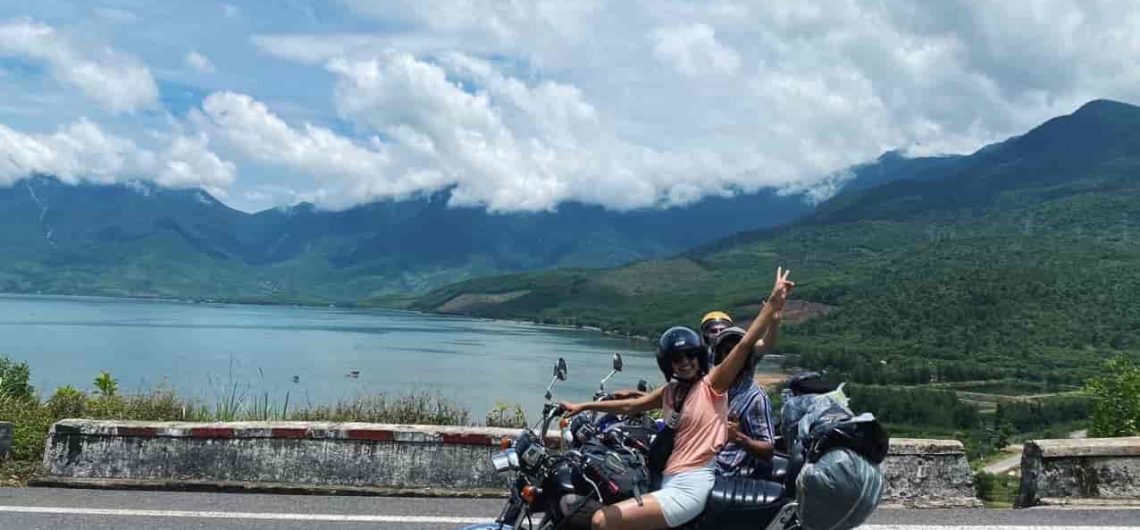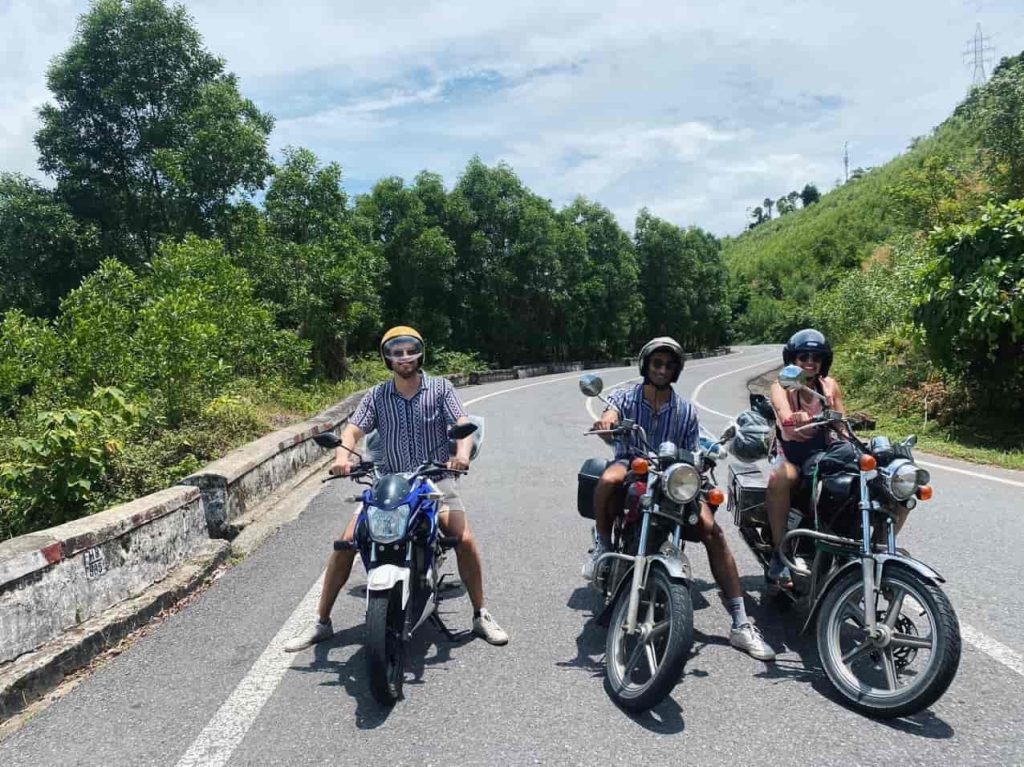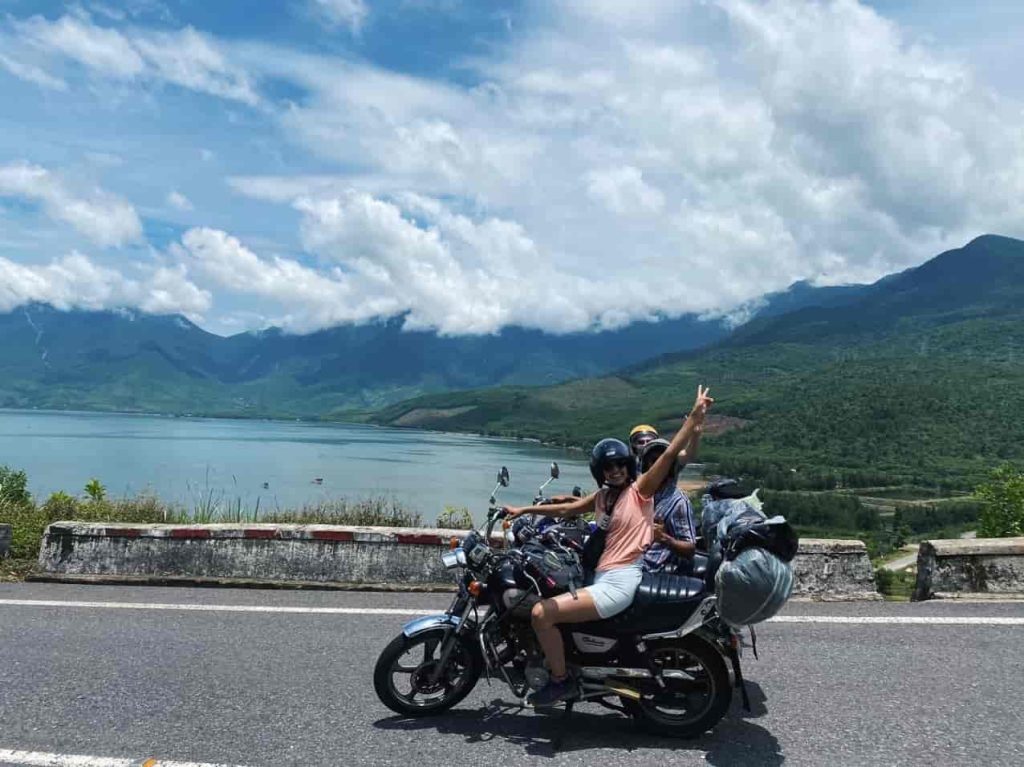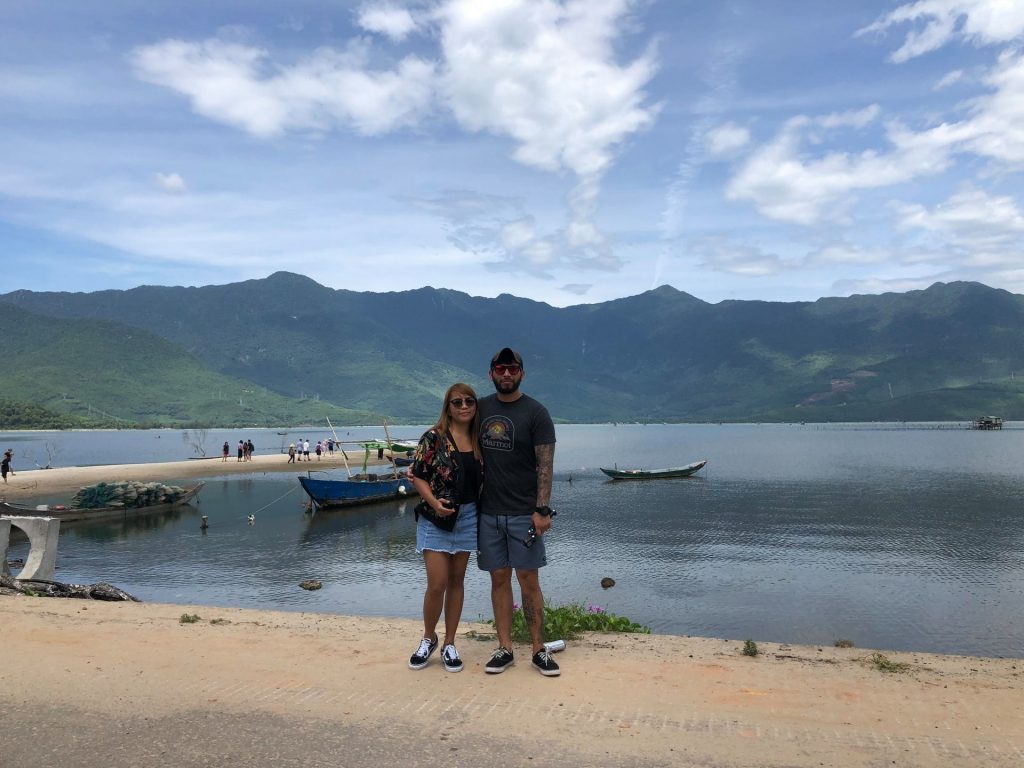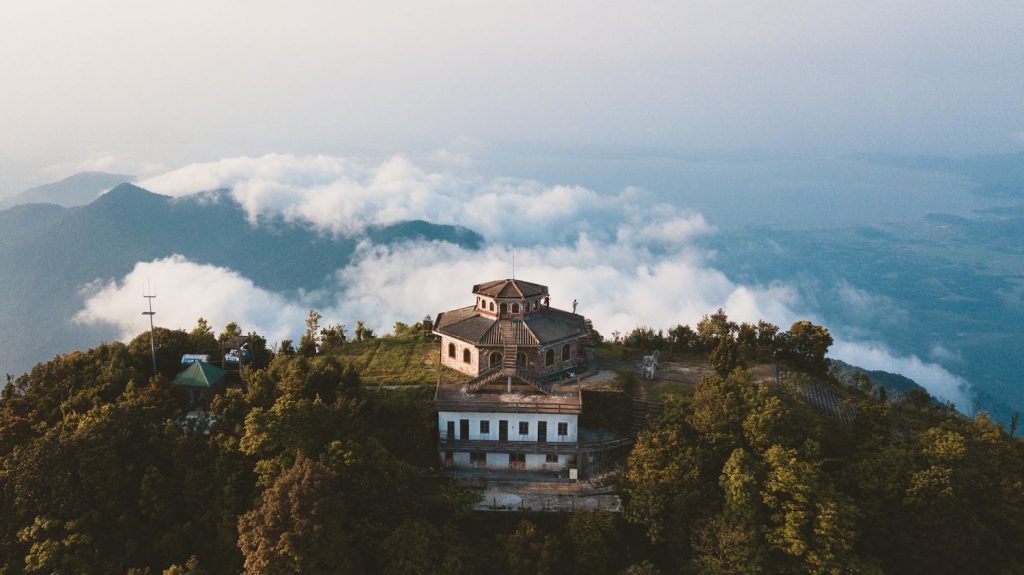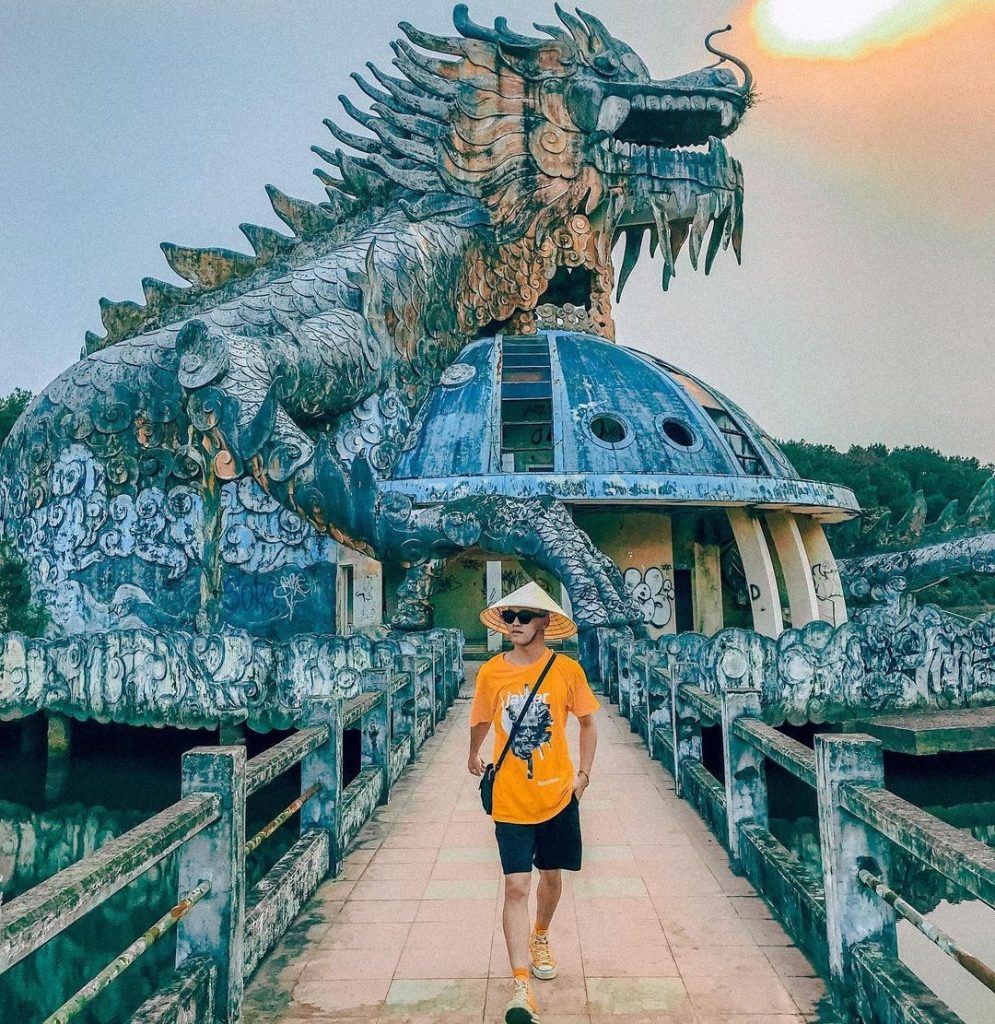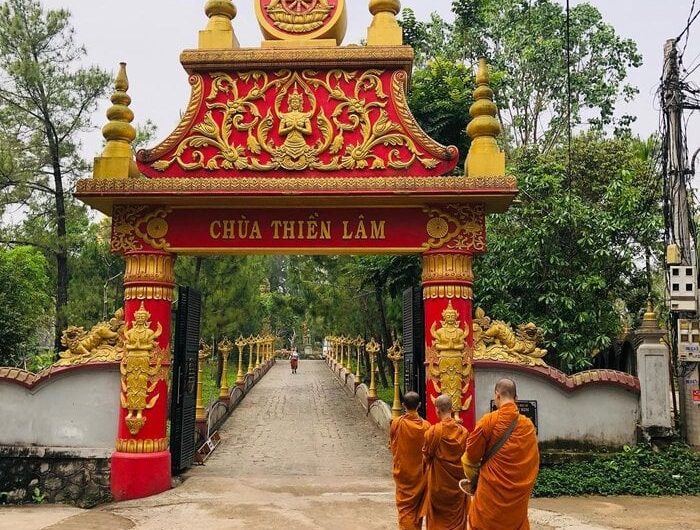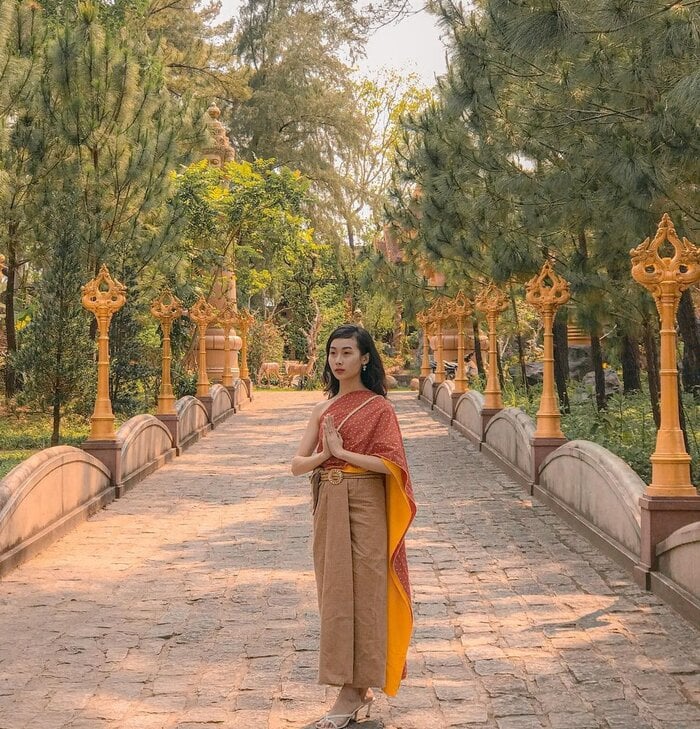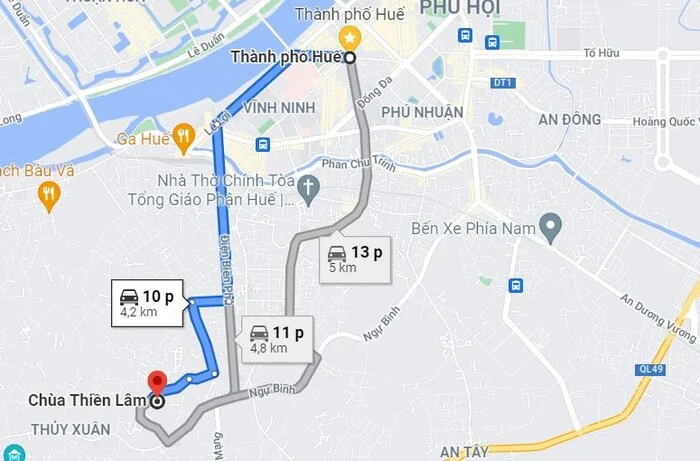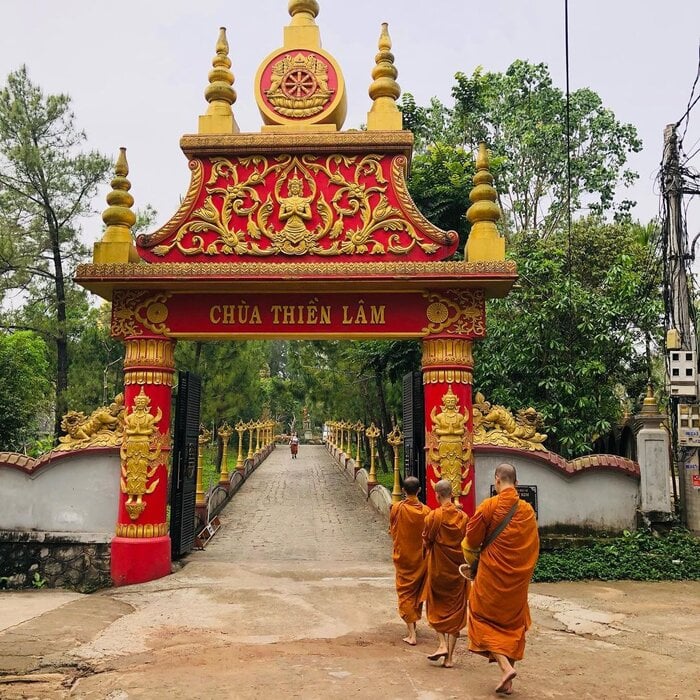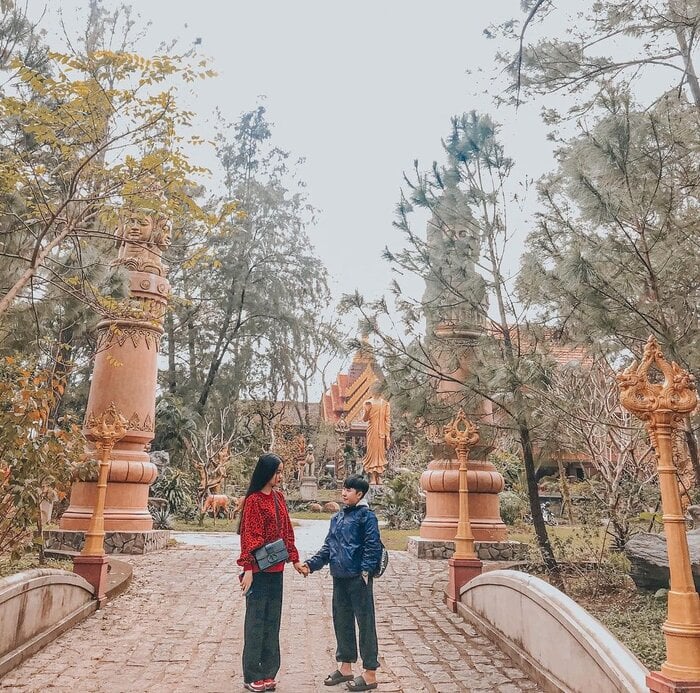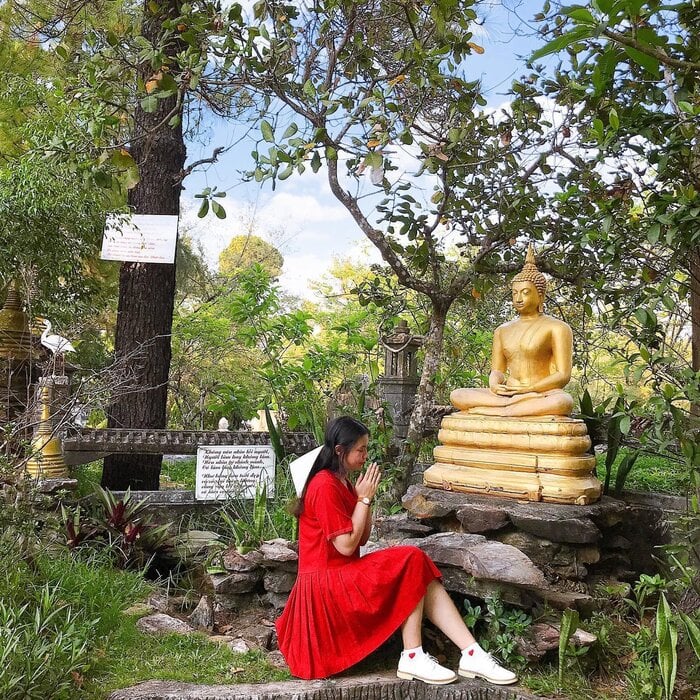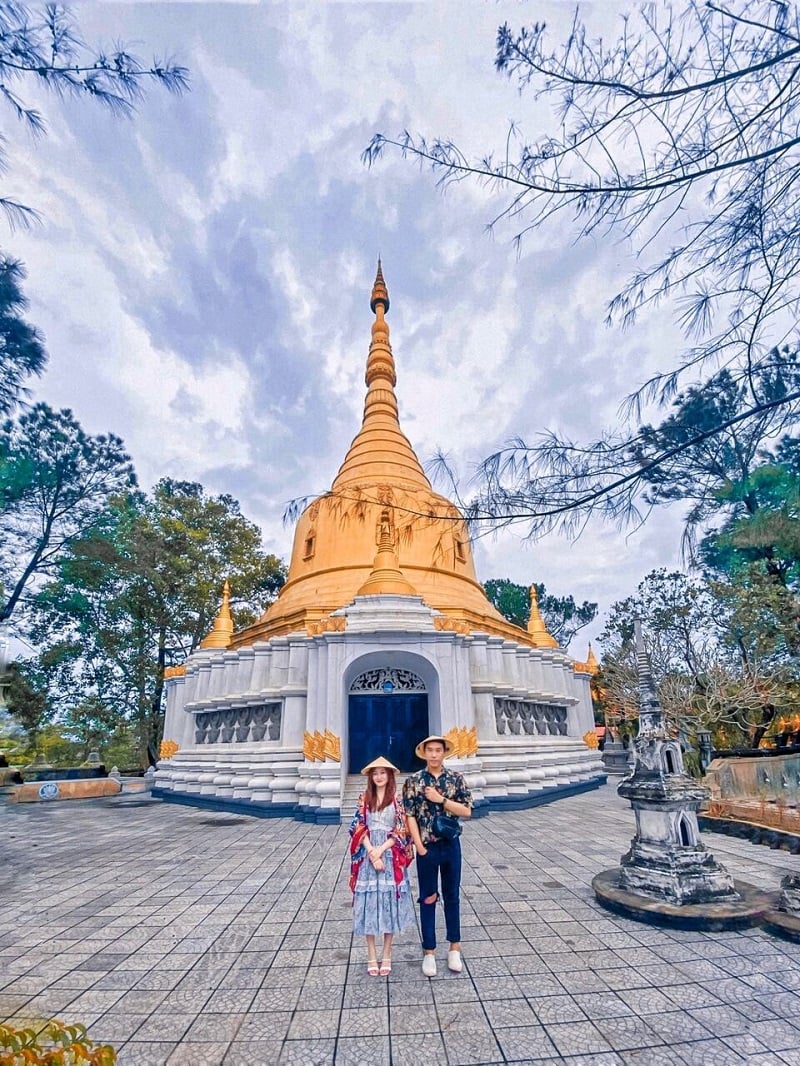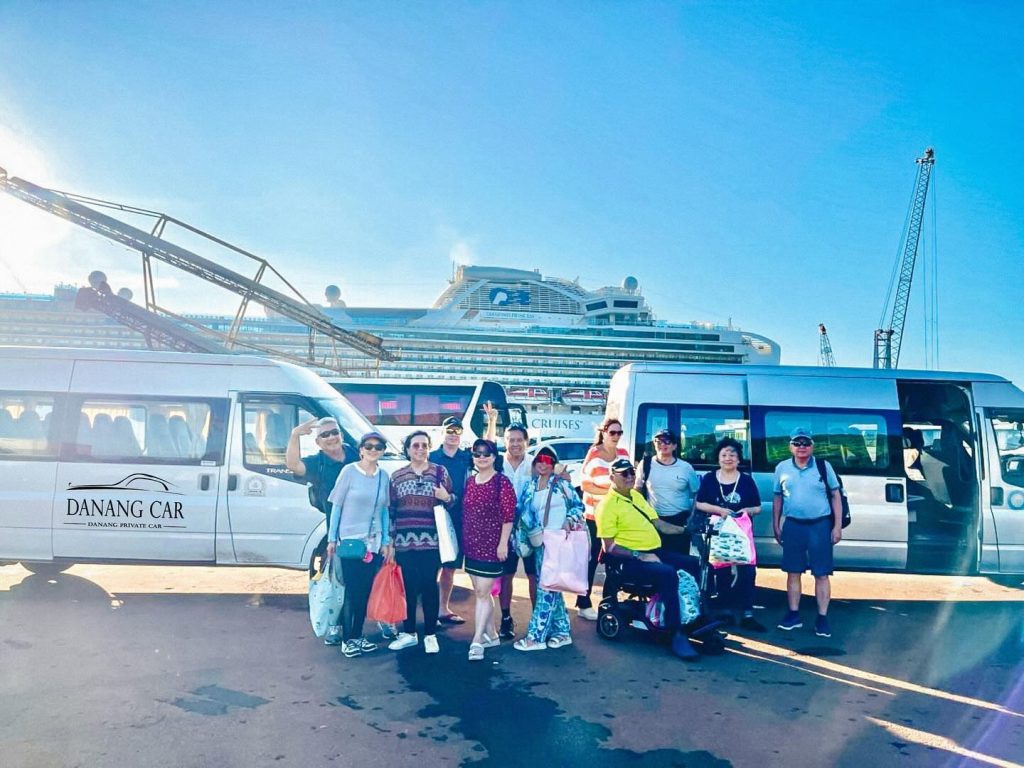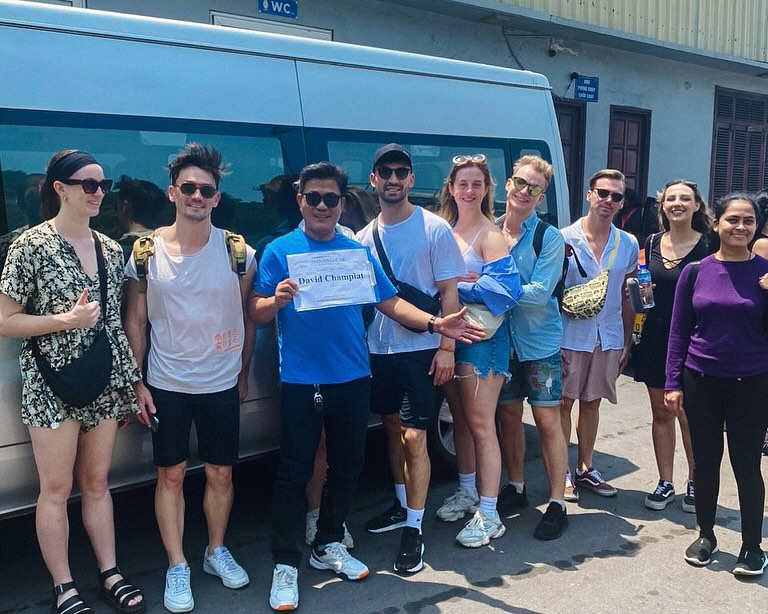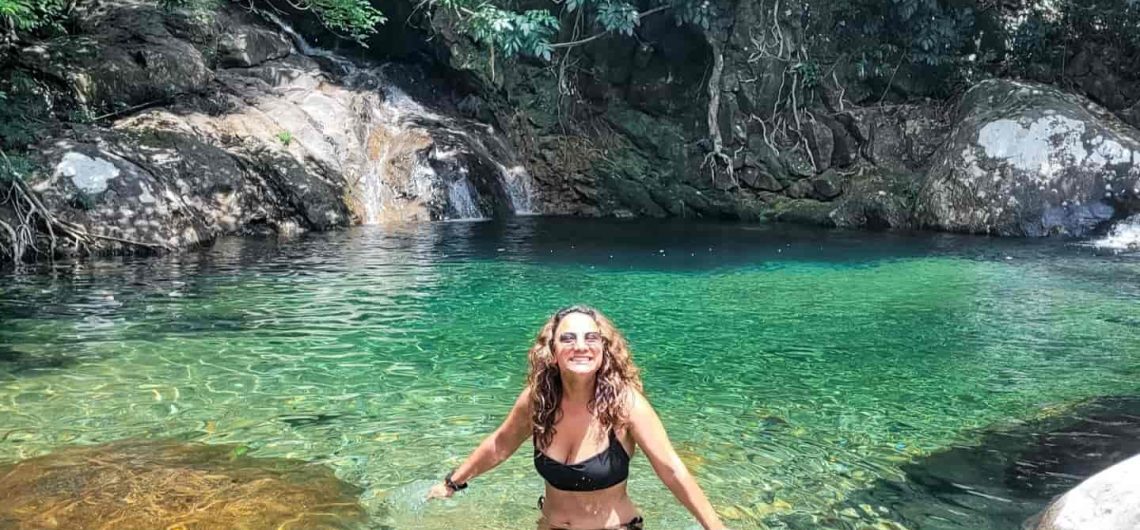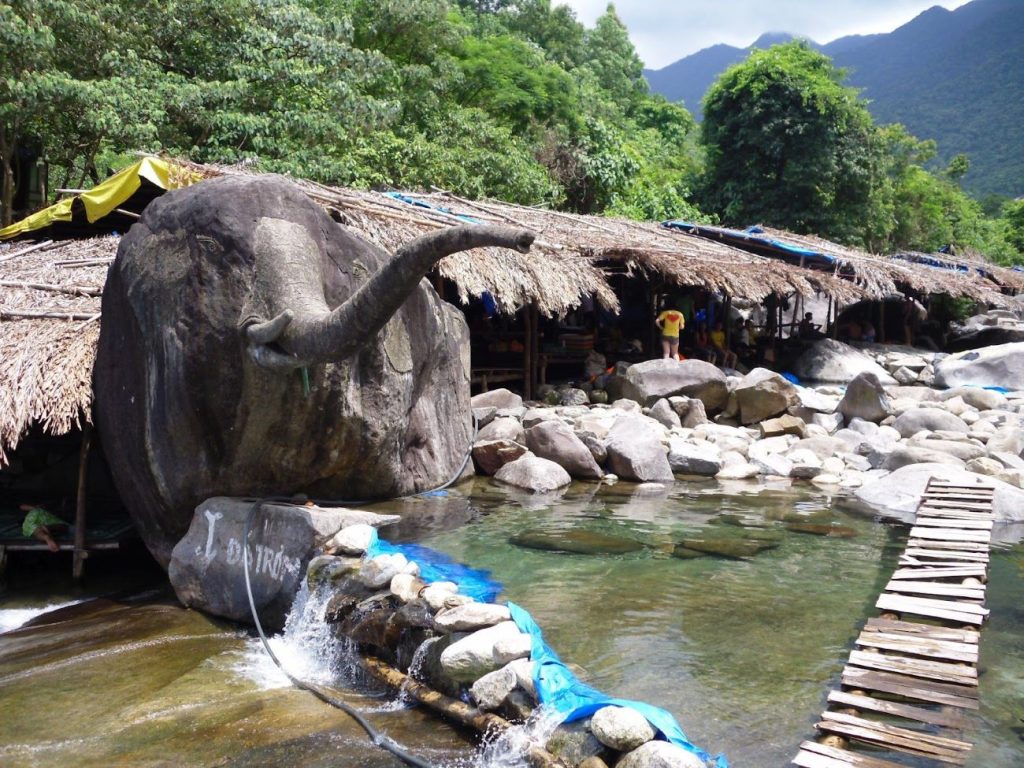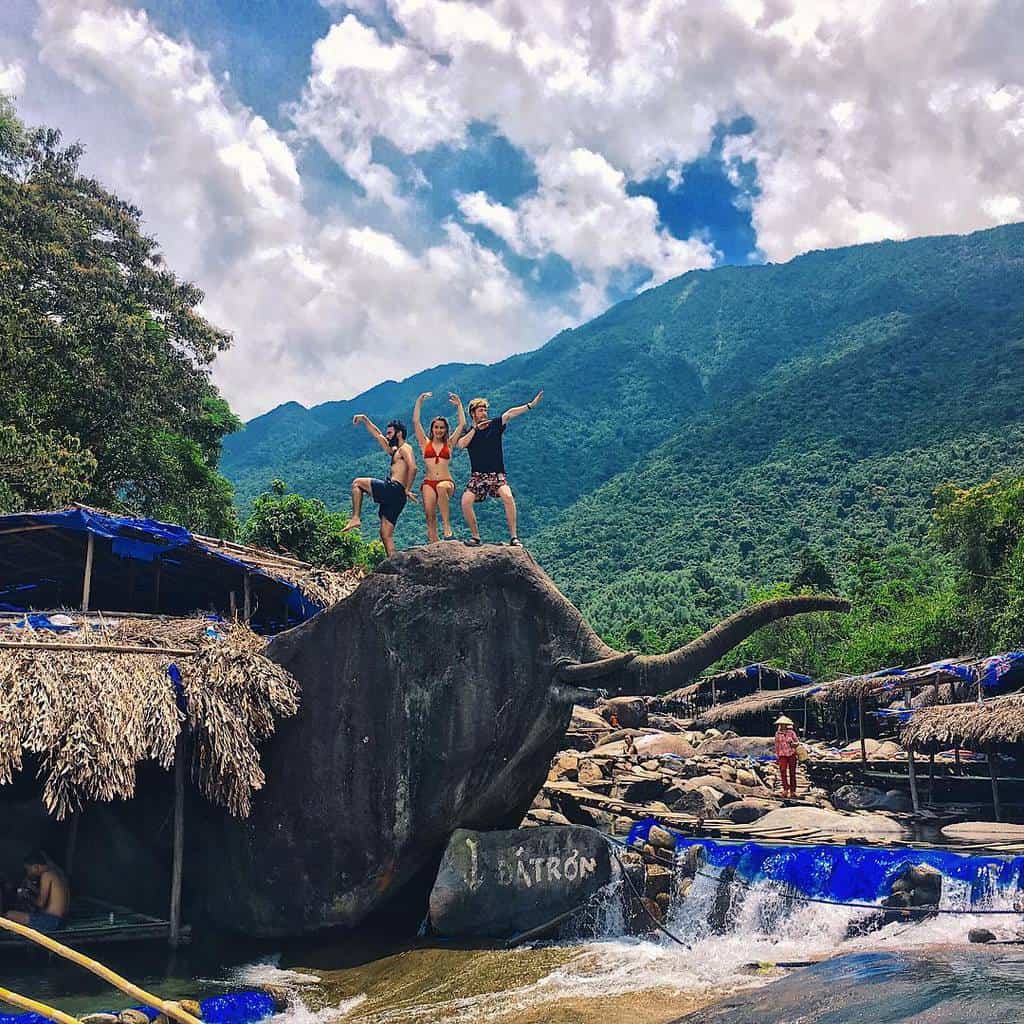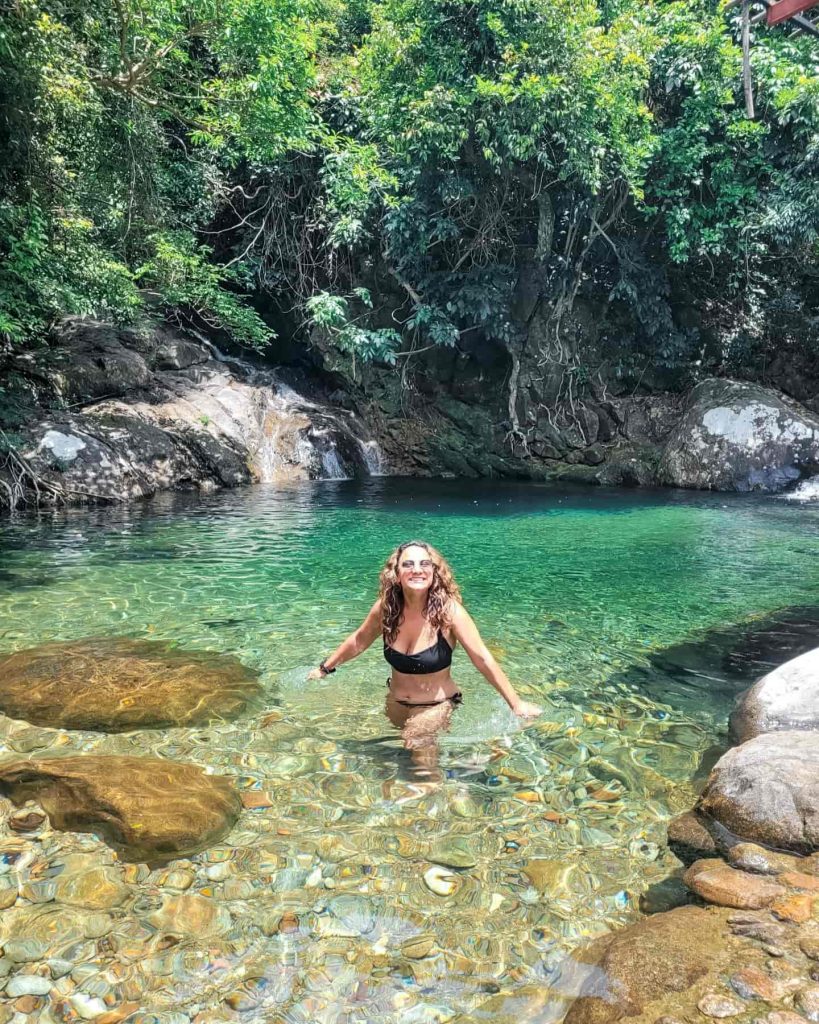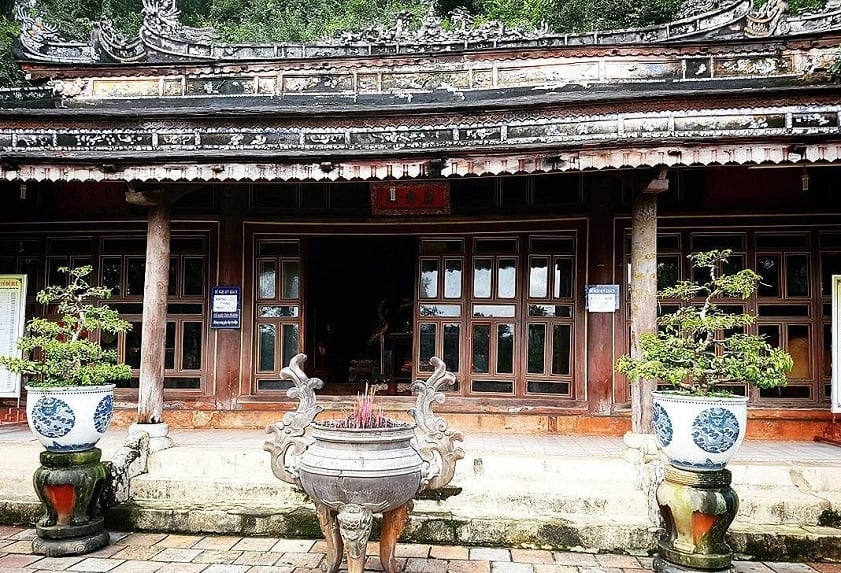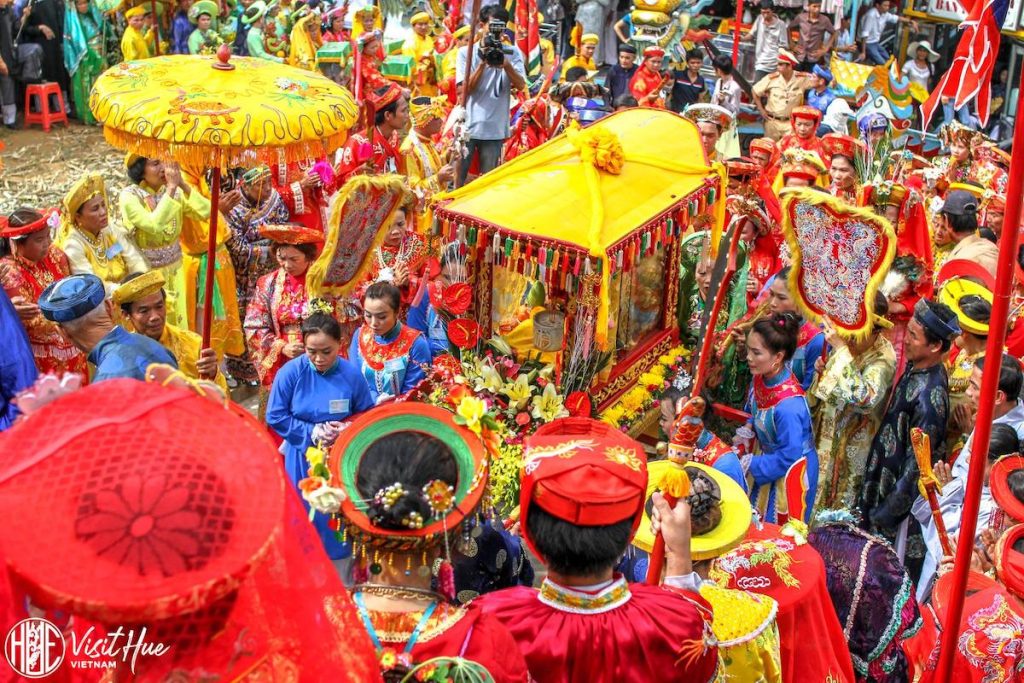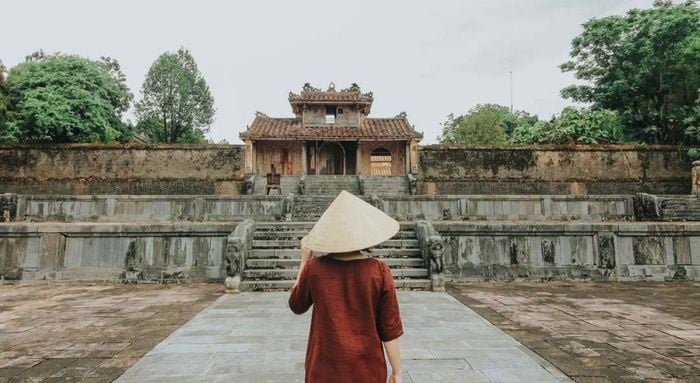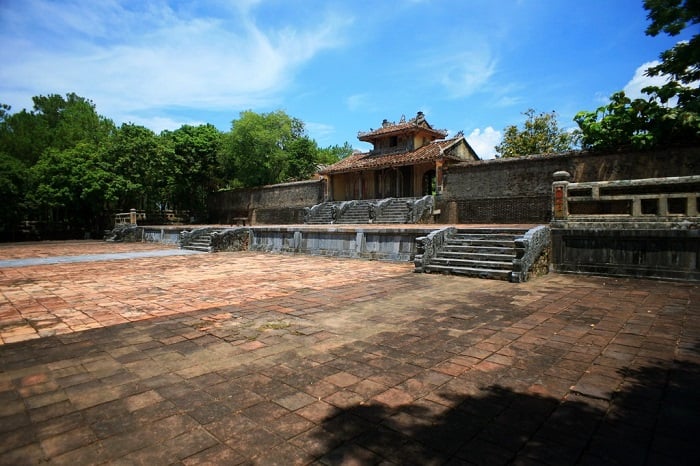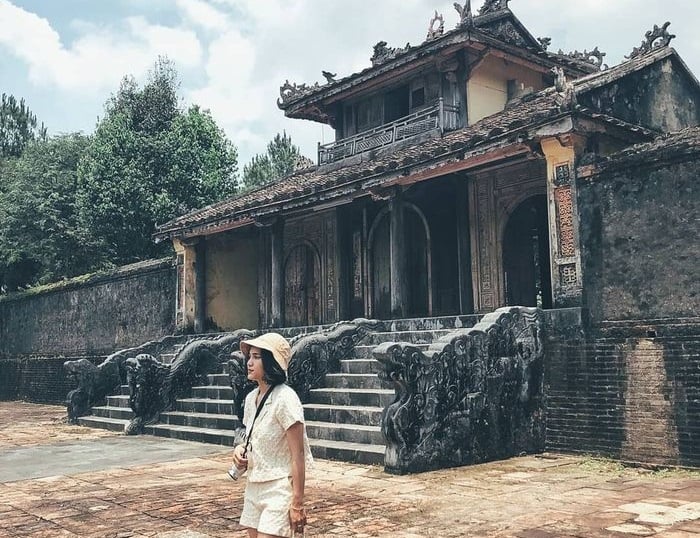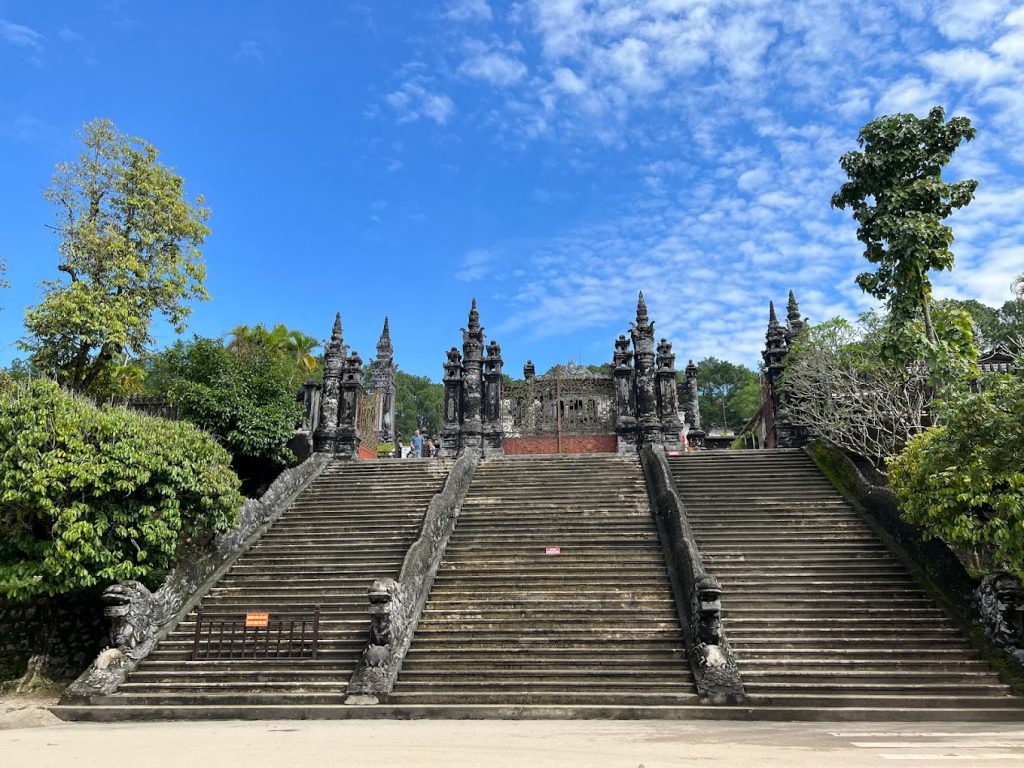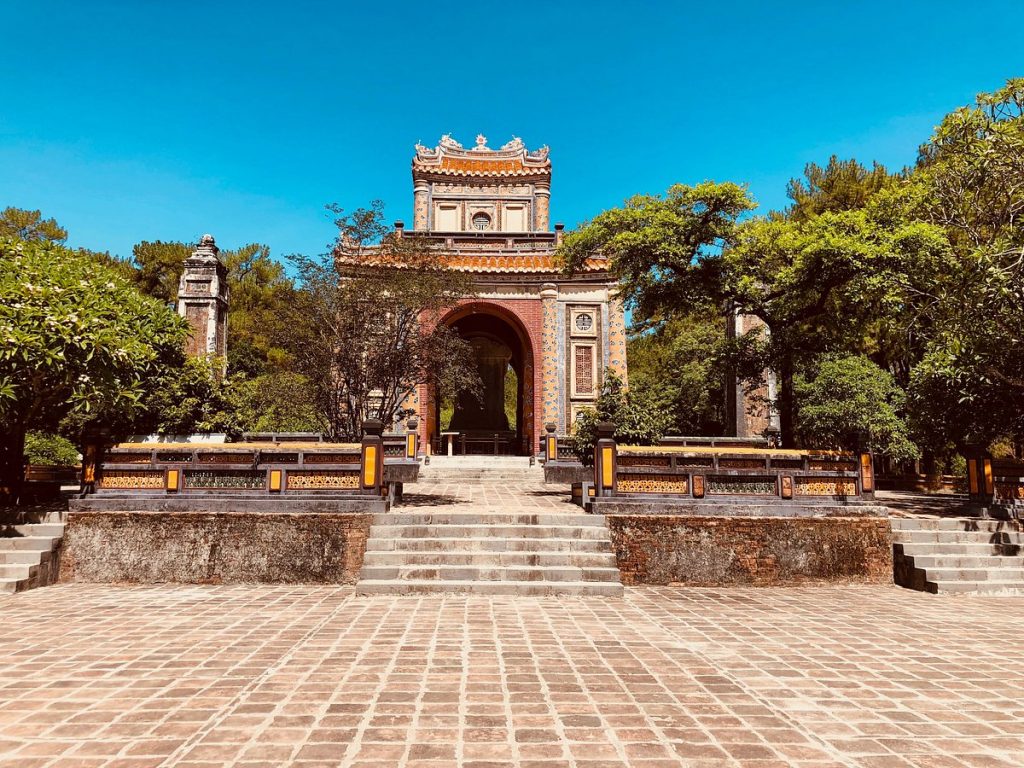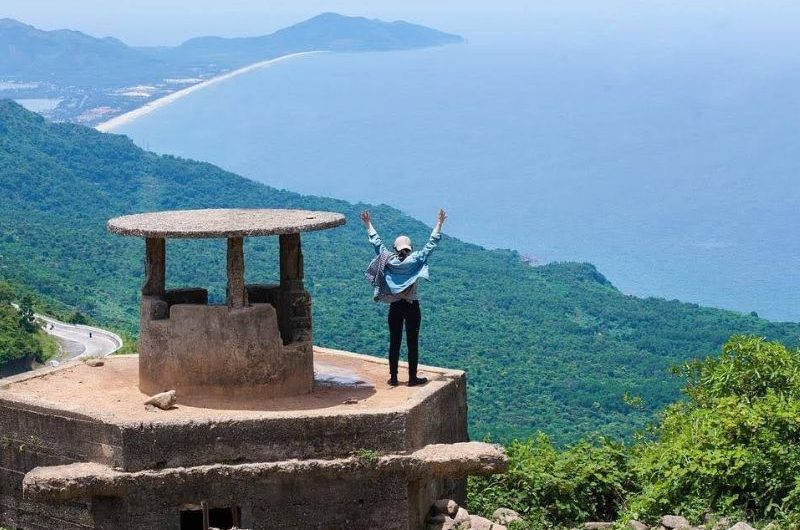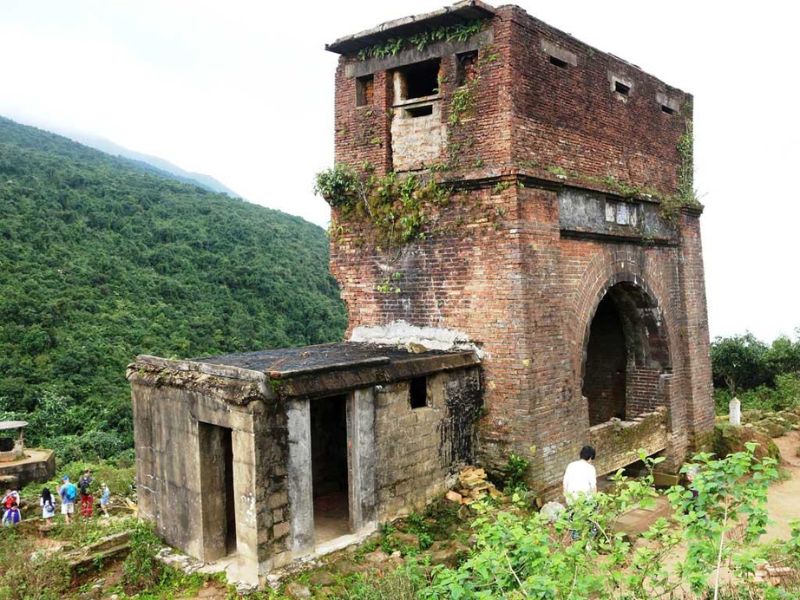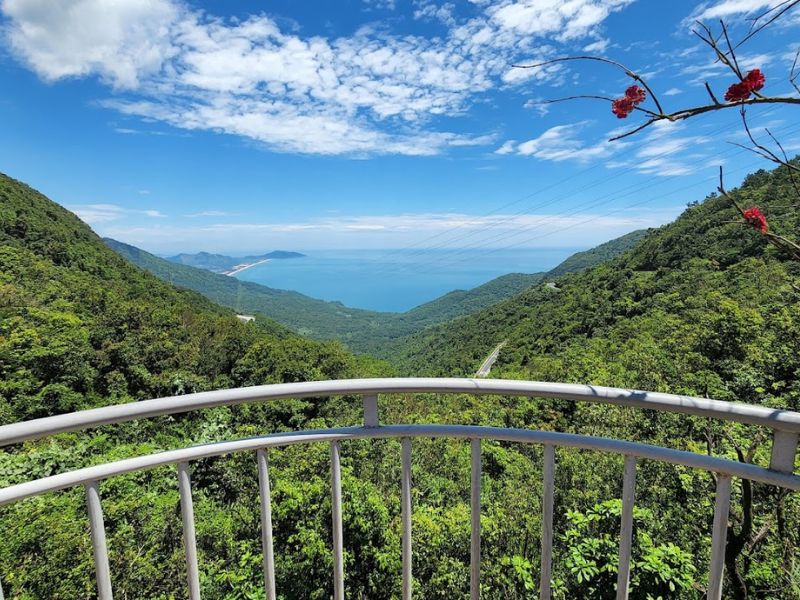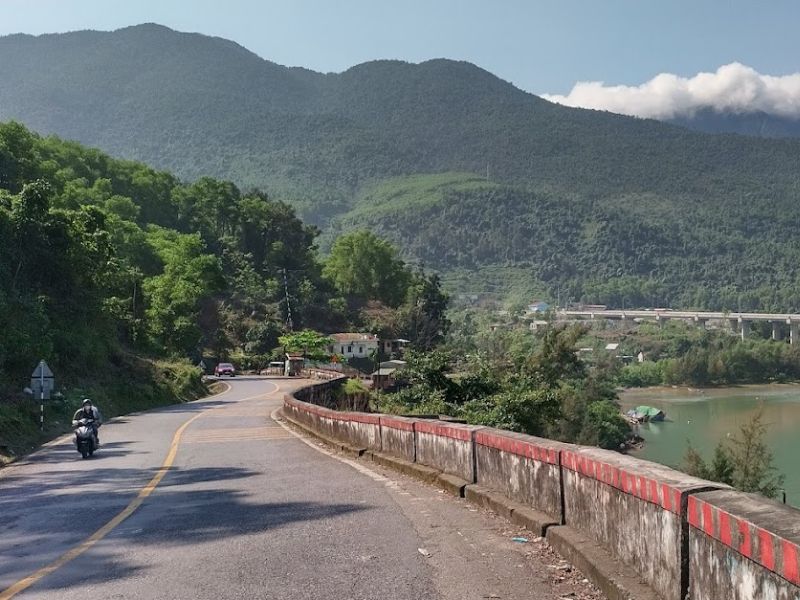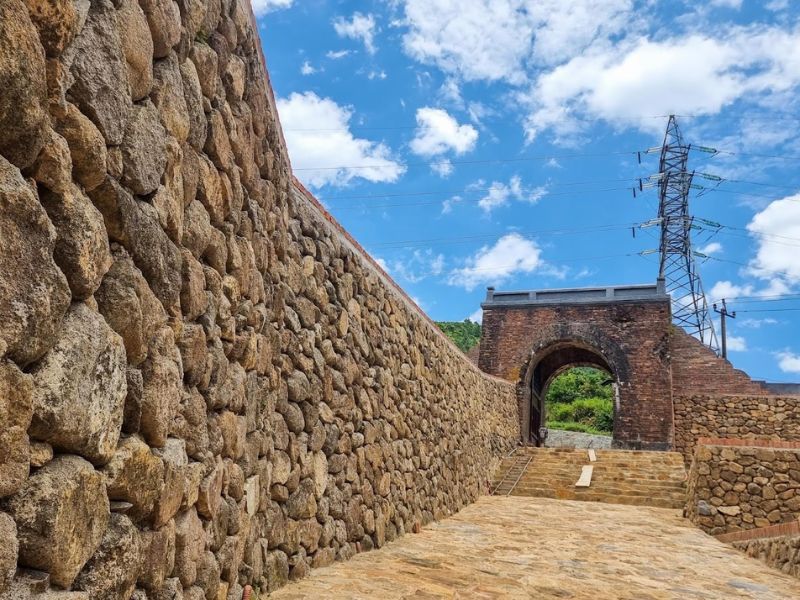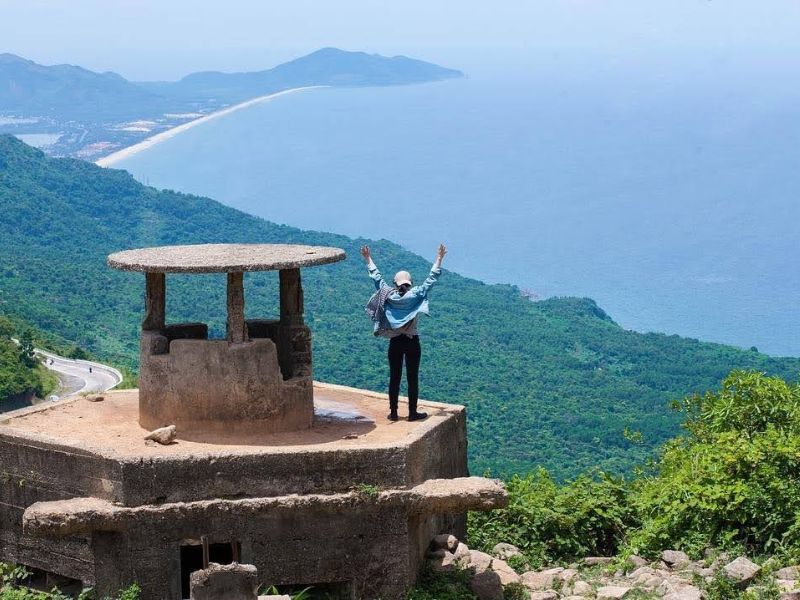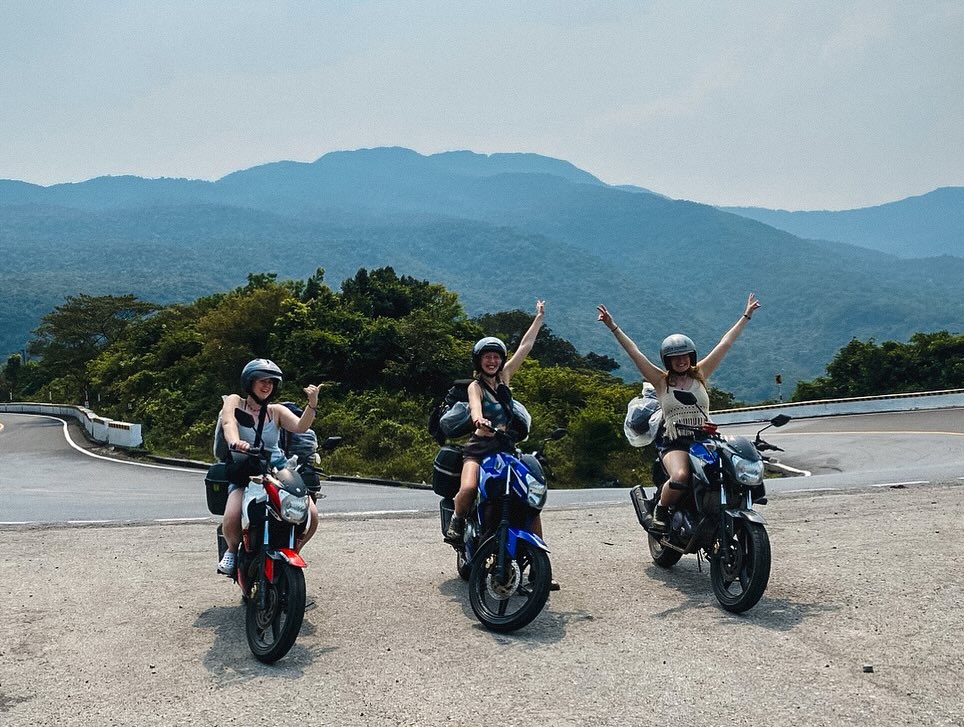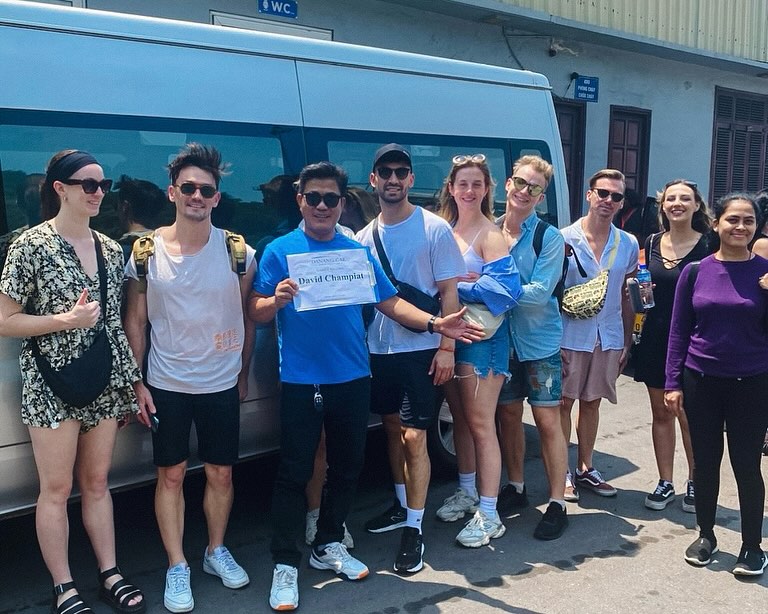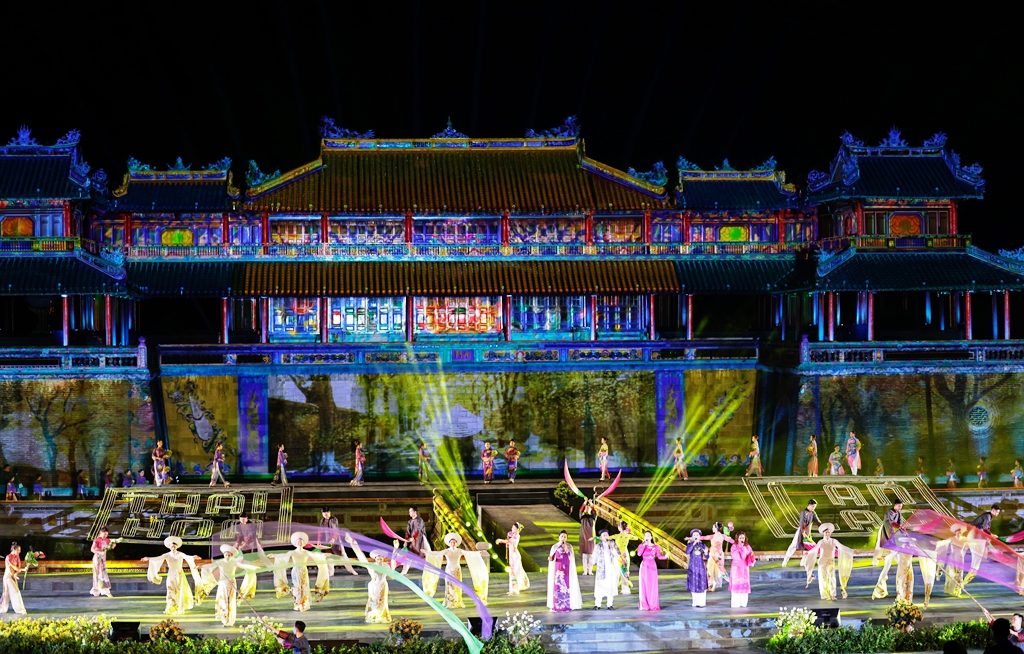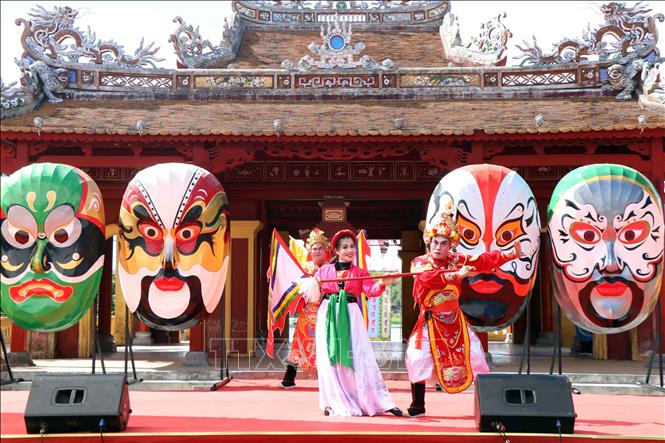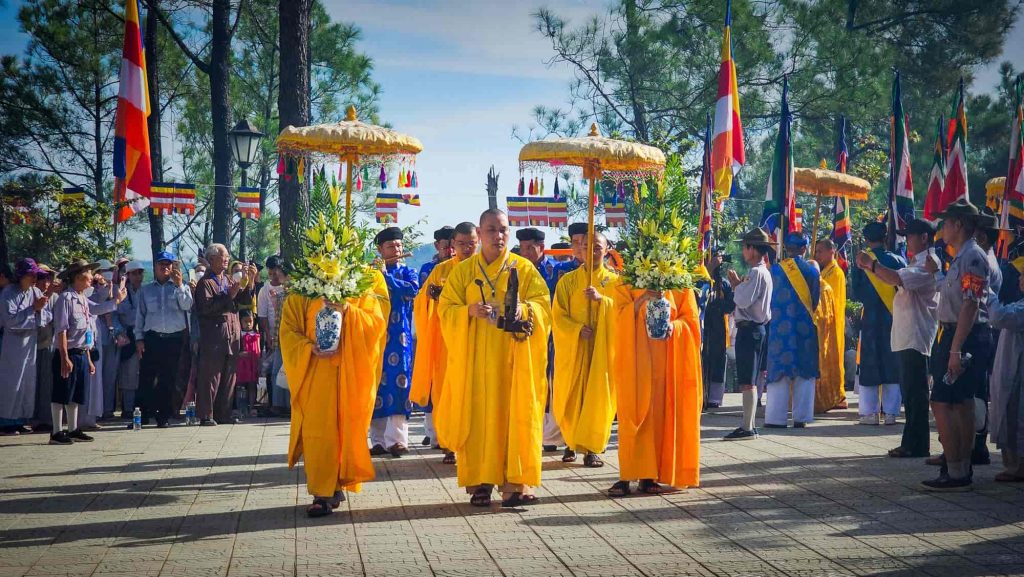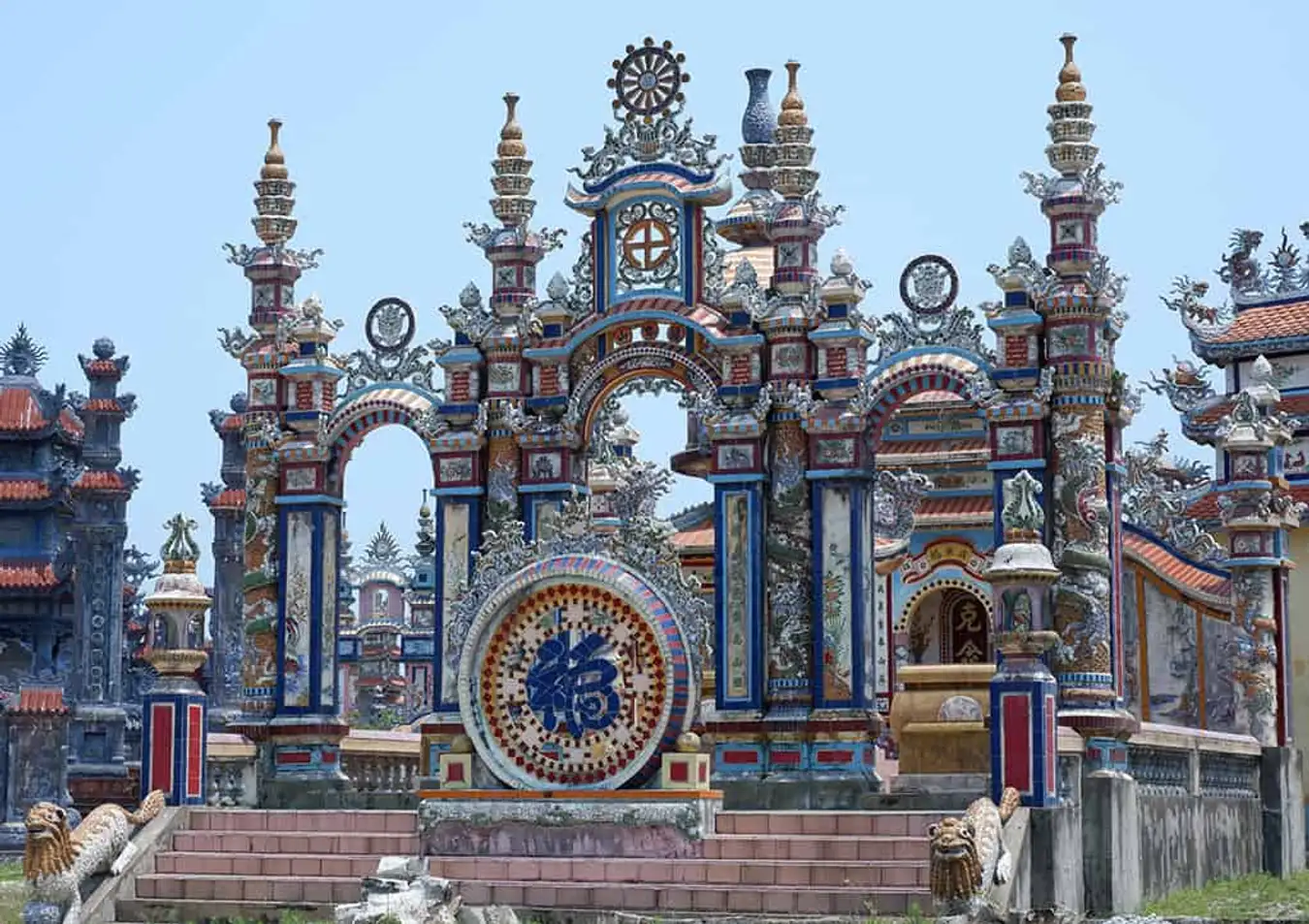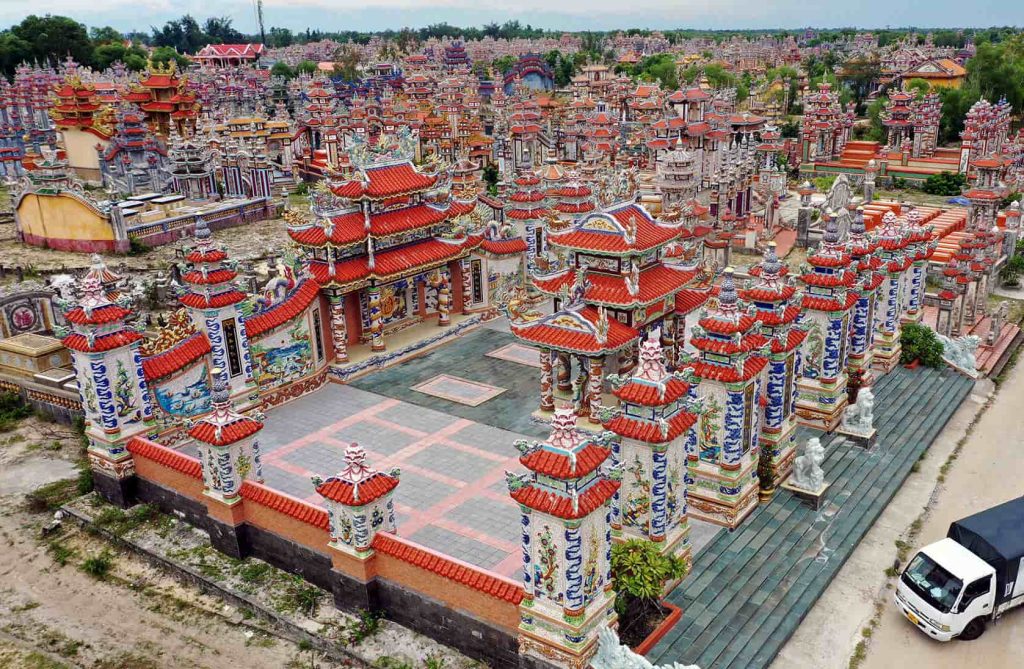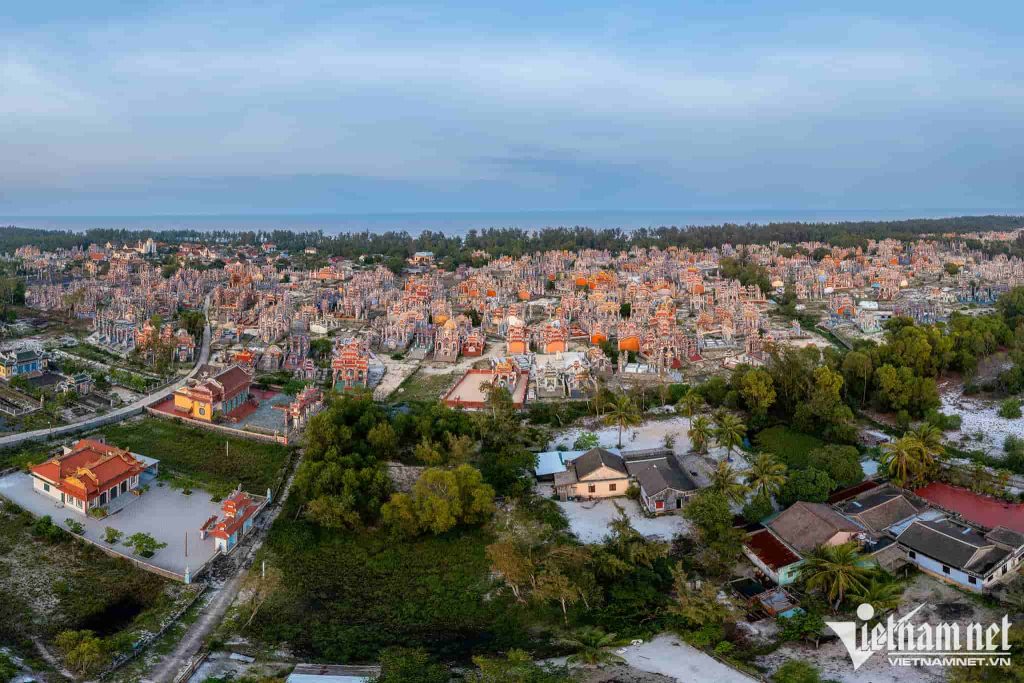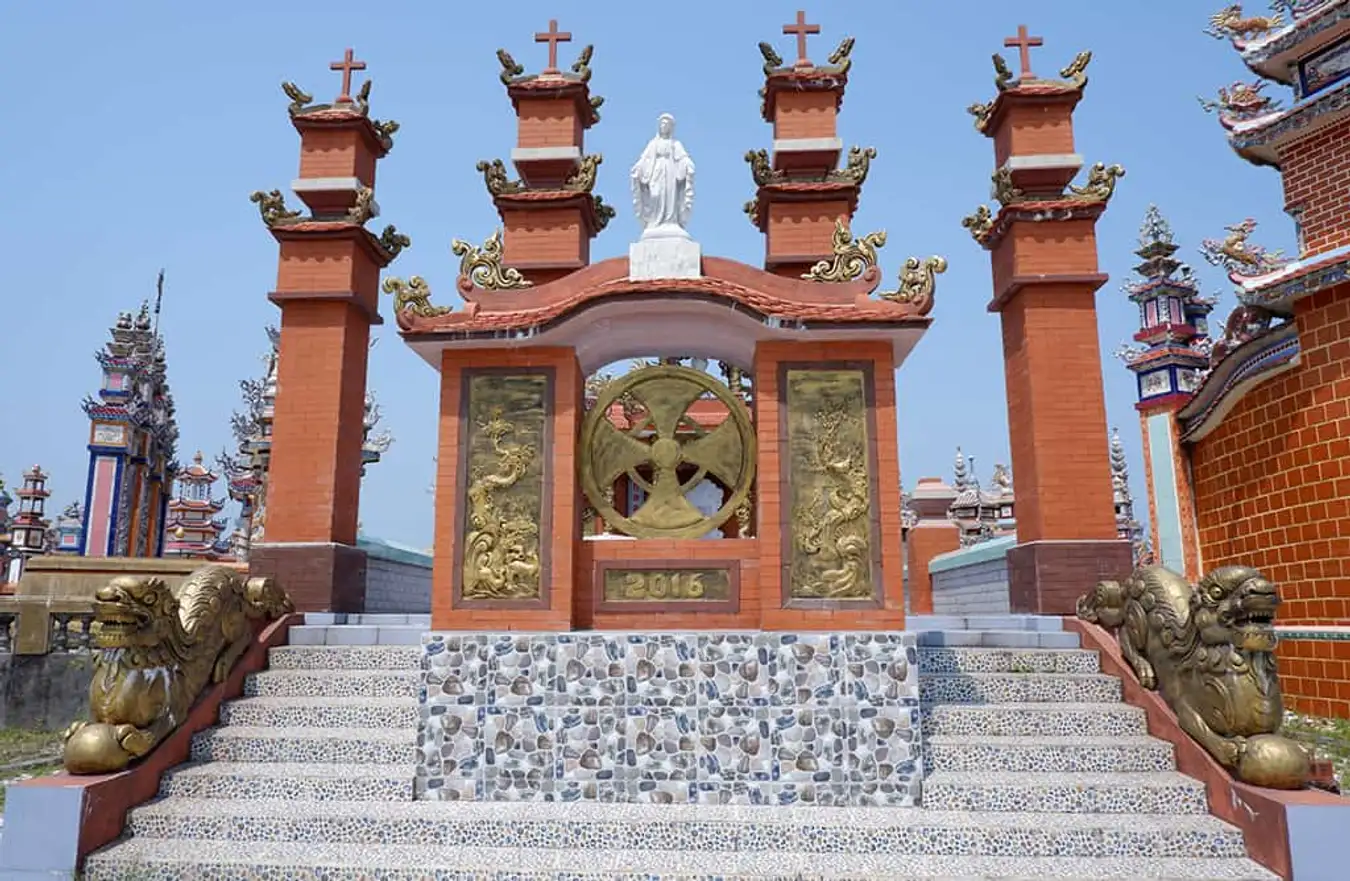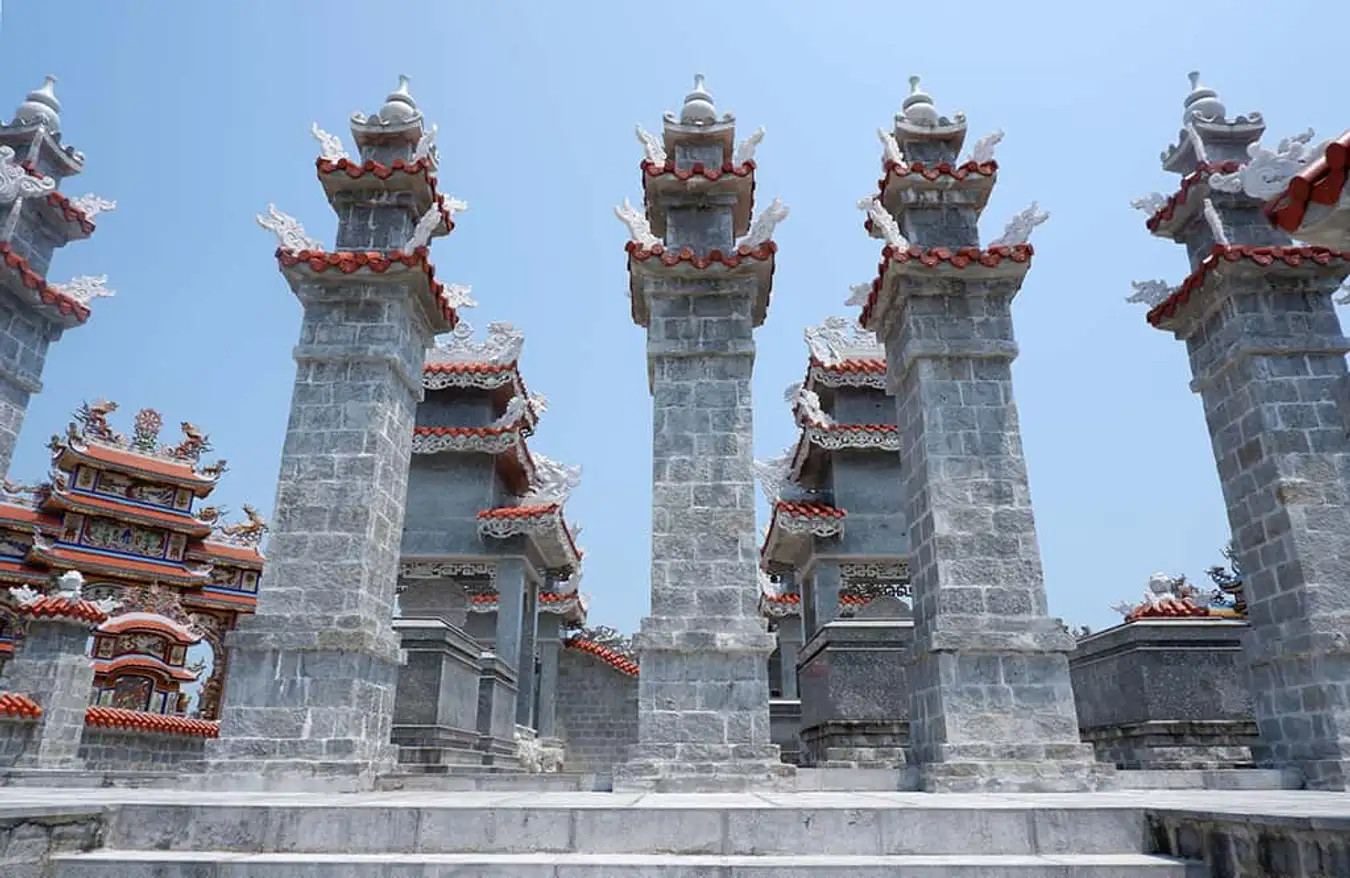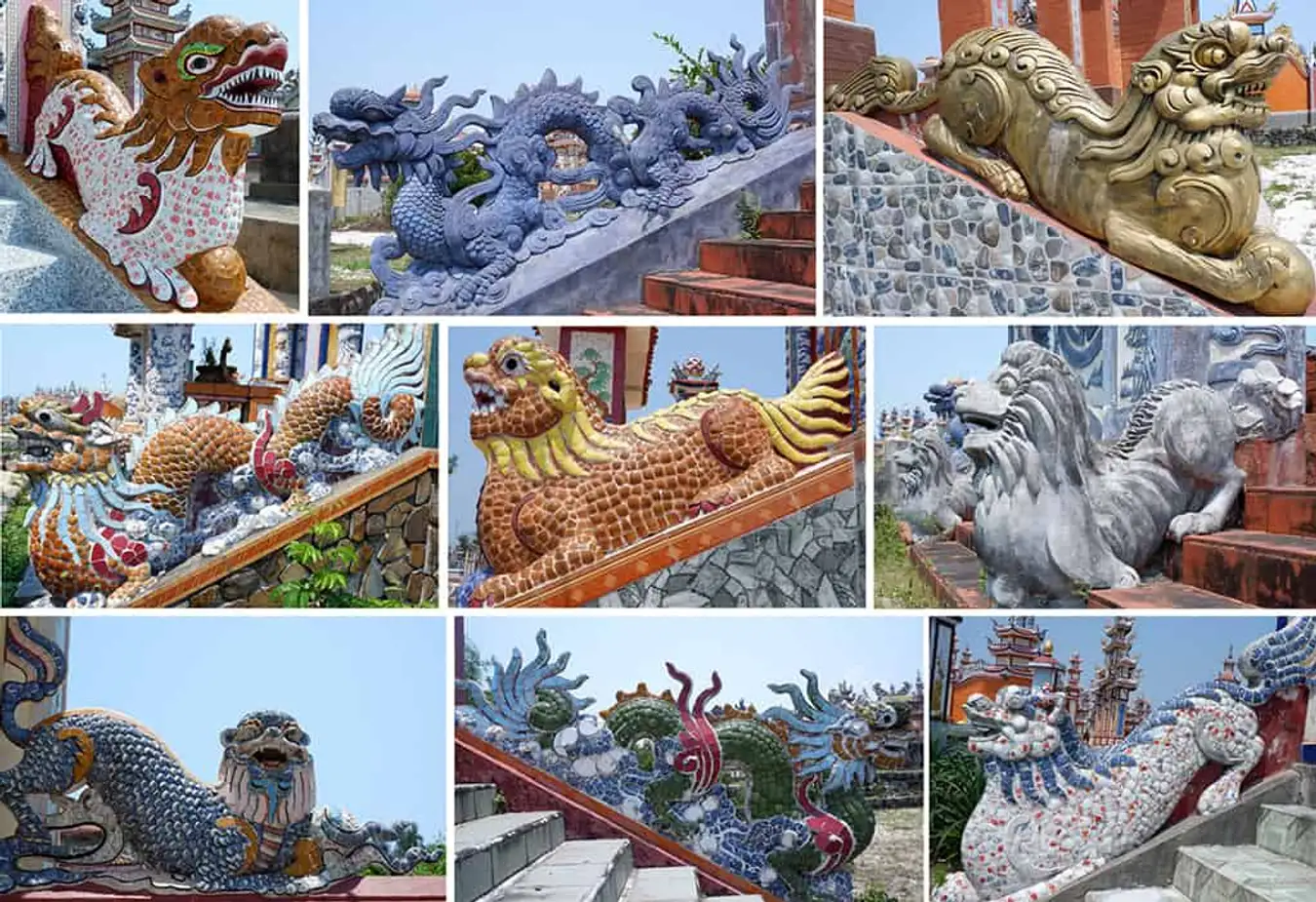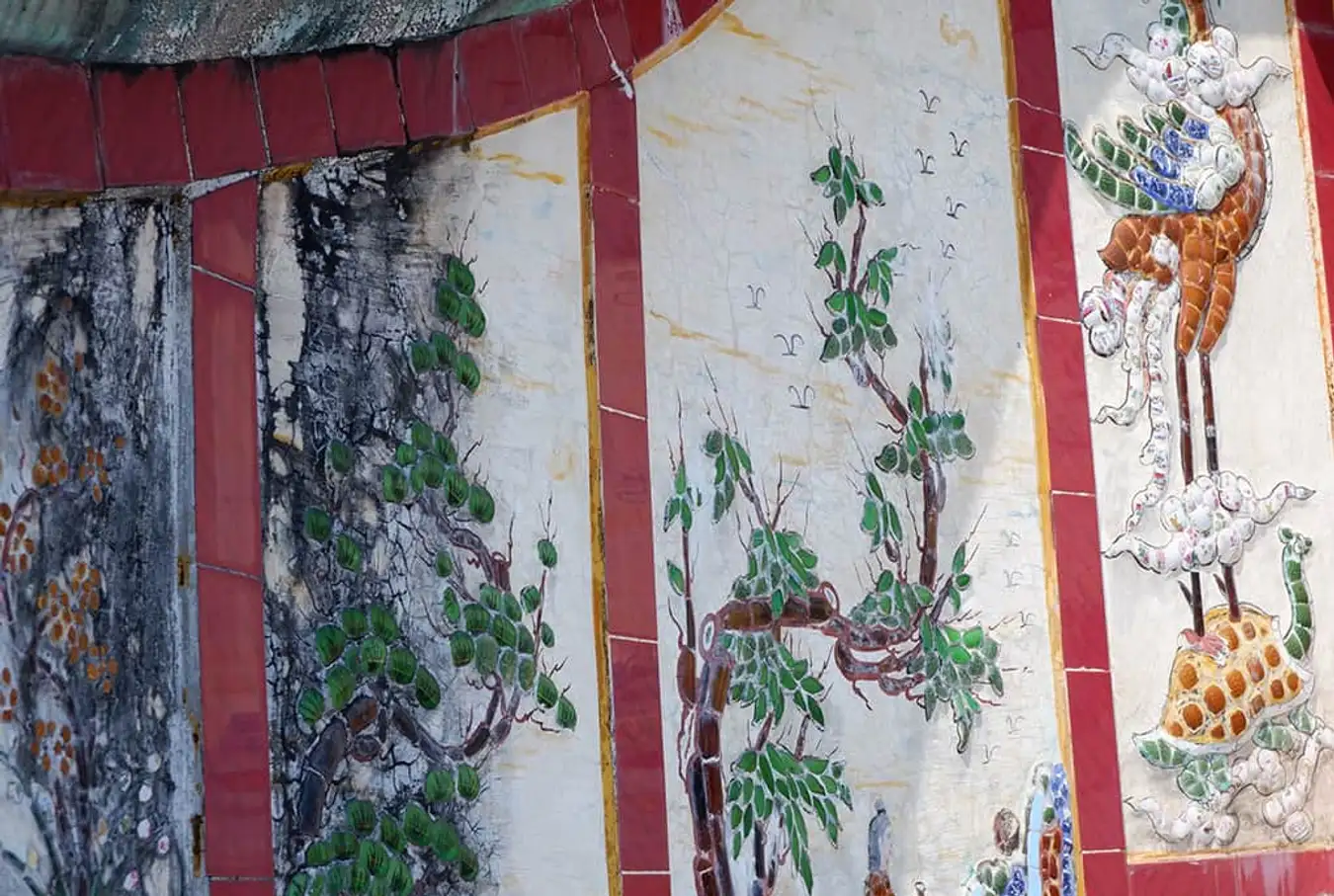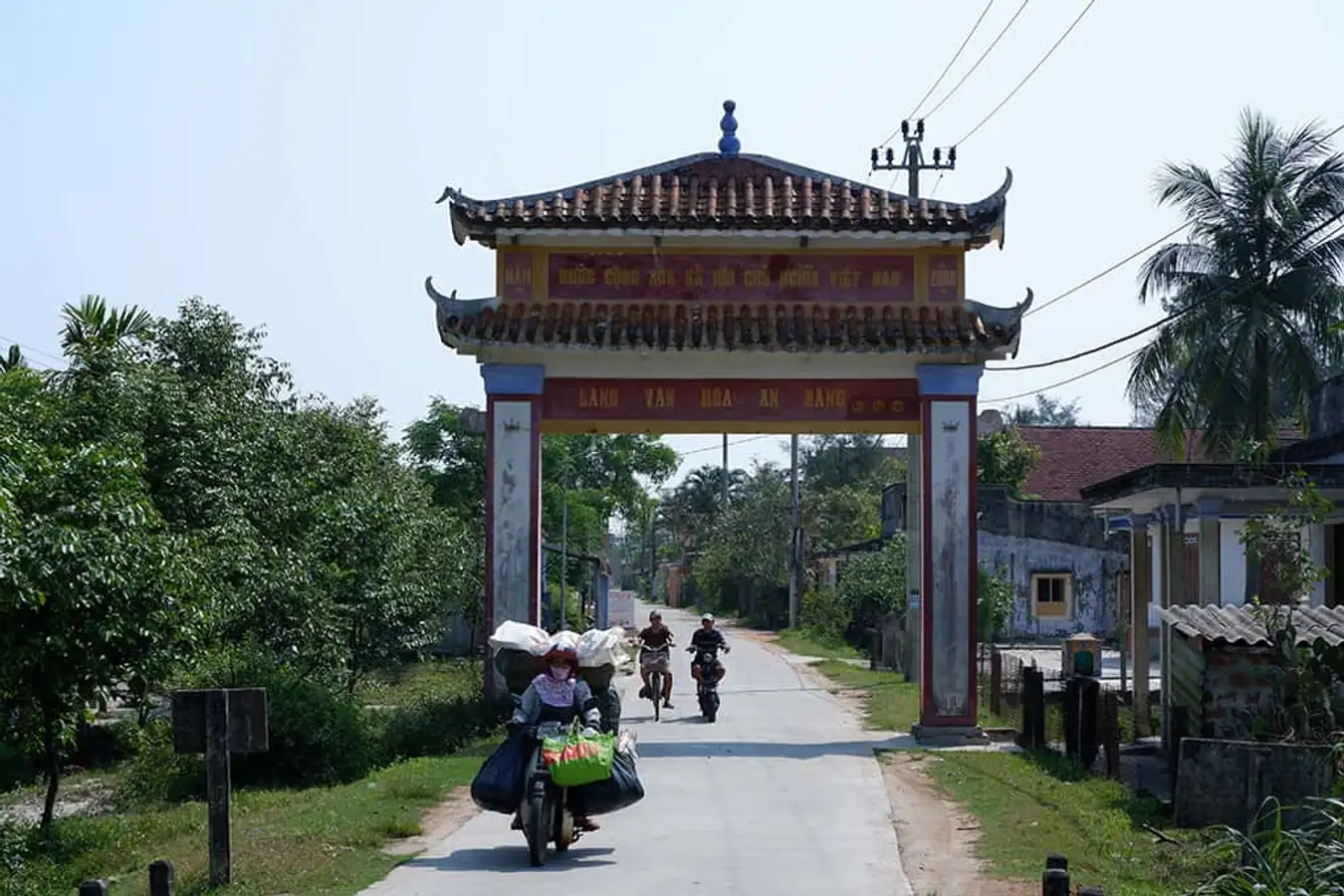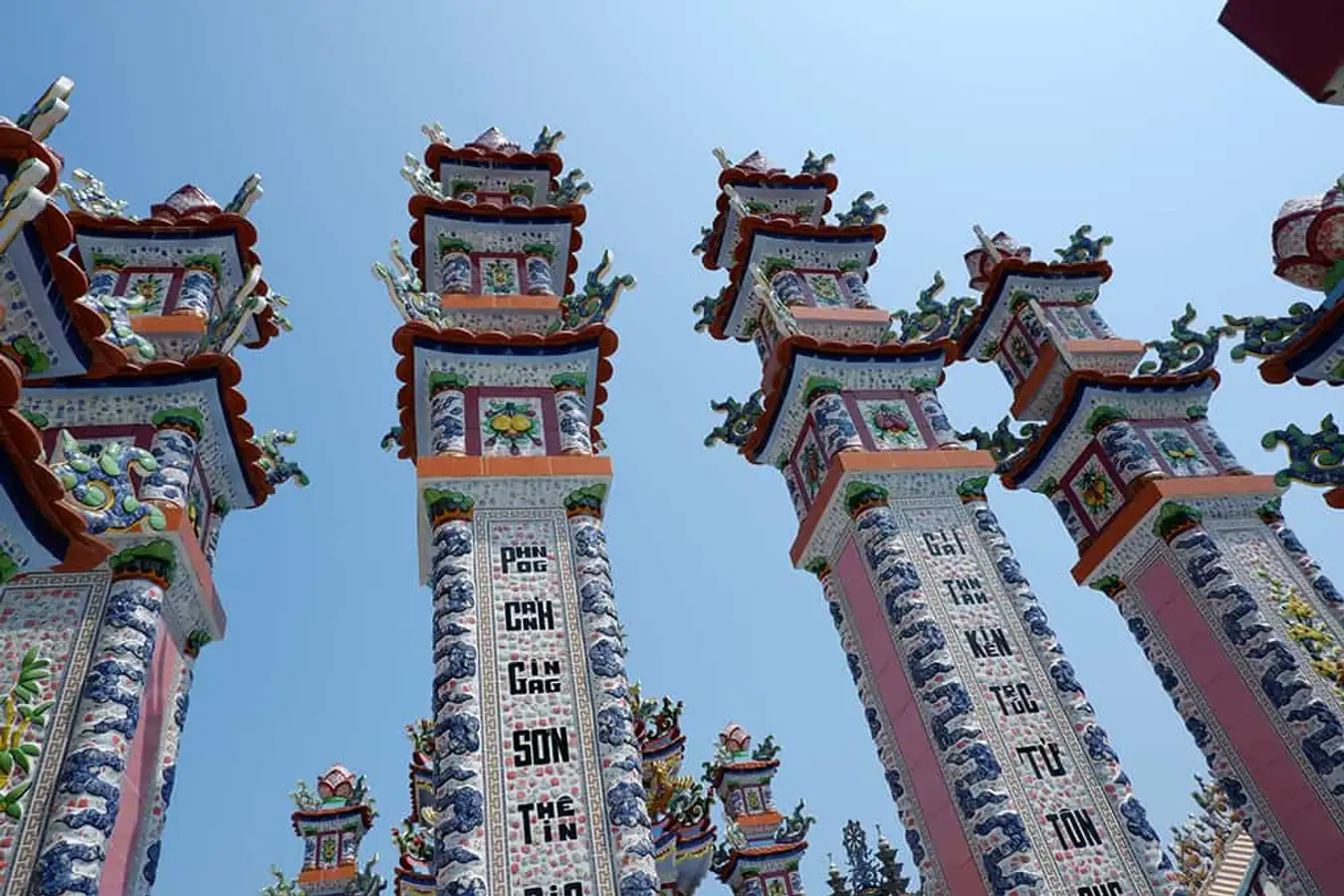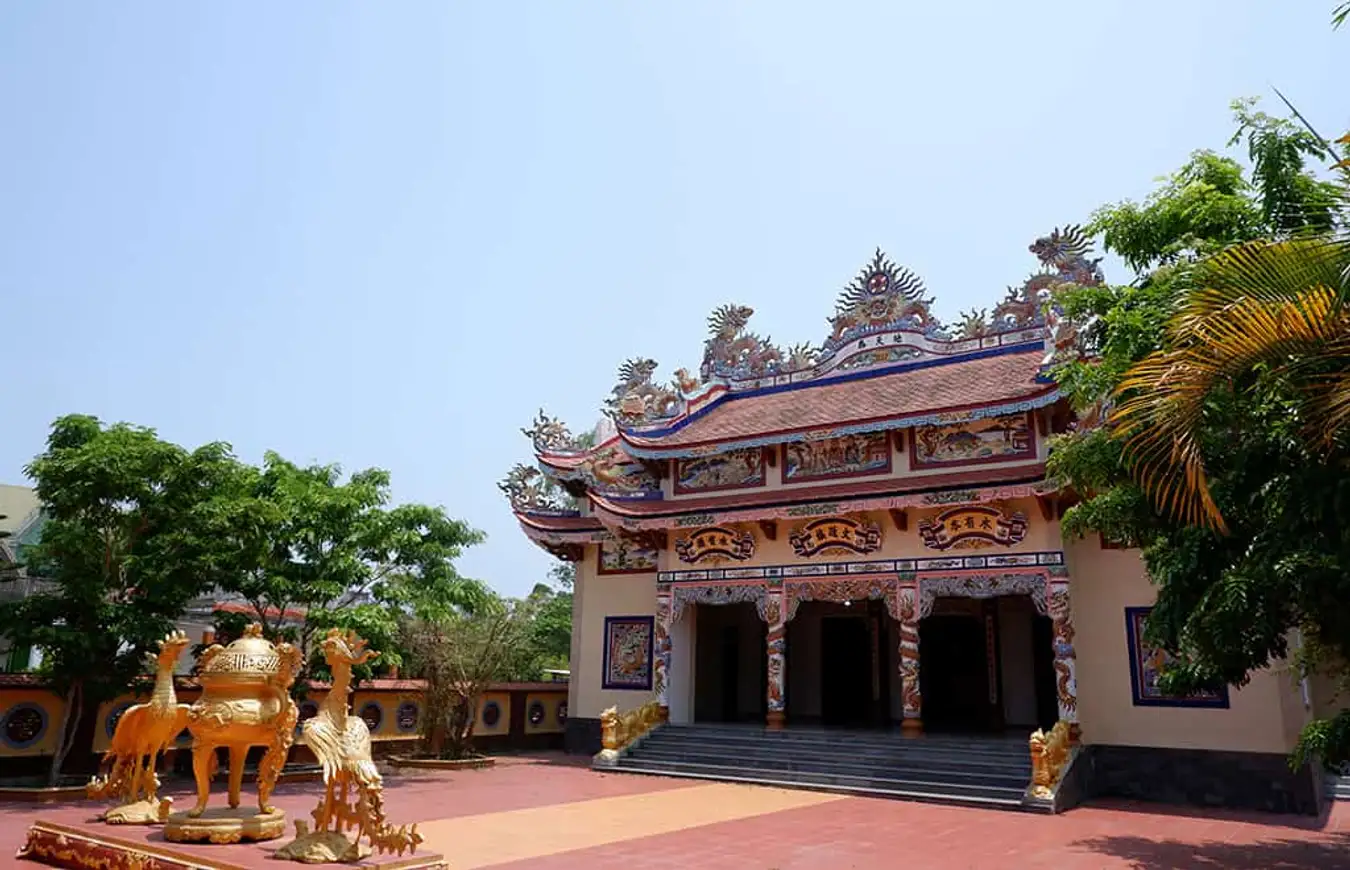Hue souvenirs are diverse, featuring traditional products that embody the unique cultural and culinary aspects of Hue. The city’s distinctive beauty is also preserved through these souvenir items.
Hue souvenirs are always sought after by many tourists when they have the chance to visit this poetic city. These items are not only traditional products and delicious foods but also capture the beauty of the culture, daily life, and lifestyle of the people of the ancient capital. When traveling to Hue, don’t miss out on the top 15 “worthwhile” items listed below!
TOP 15 Hue Souvenirs You Should Buy
Poetry Hats – Meaningful Hue Souvenirs
The poetry hat from Hue is a traditional product from the craft villages of the ancient capital. It’s not just a hat for sun and rain protection but also highlights the gentle, kind beauty of Vietnamese women. The poetry hat in Hue has a unique feature: when held up to the light, beautiful patterns and poems appear.
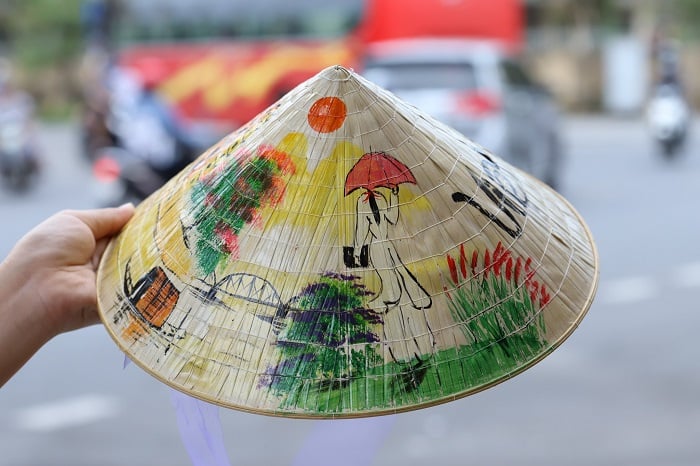
Lacquer Paintings
For art lovers, lacquer paintings are definitely a must-buy souvenir in Hue. These paintings are created with watercolor and entirely from natural materials. The harmony of colors makes these paintings refined and visually appealing.
If you’re looking for a day trip from Da Nang or Hoi An to visit famous sites in Hue and shop for souvenirs, book a day trip from Da Nang to Hue or Day Trip From Hoi An To Hue with DanangPrivateCar.com. With a fleet of new vehicles and English-speaking drivers providing pick-up and drop-off service, you’ll enjoy a safe, cost-effective, and private travel experience.
Hue Royal Tea
In the ancient capital, you can enjoy many delicious foods such as royal sweet soups, sesame candy, and more. Hue Royal Tea is also very popular among visitors. You can choose some tea products as gifts; they are both meaningful and good for health.
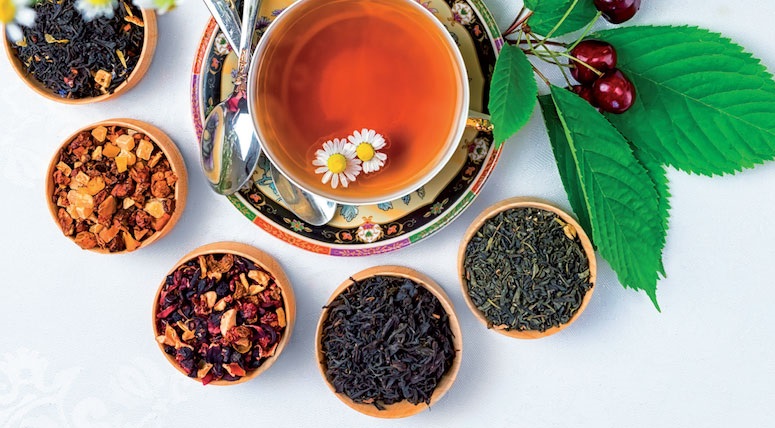
Silk Fabric
If you visit the traditional craft villages in Hue, you’ll see artisans meticulously spinning threads and weaving beautiful silk fabric. With this Hue souvenir, you can create scarves, shirts, and pants for friends and family. Hue silk is famous for being soft, smooth, and easy to wear.
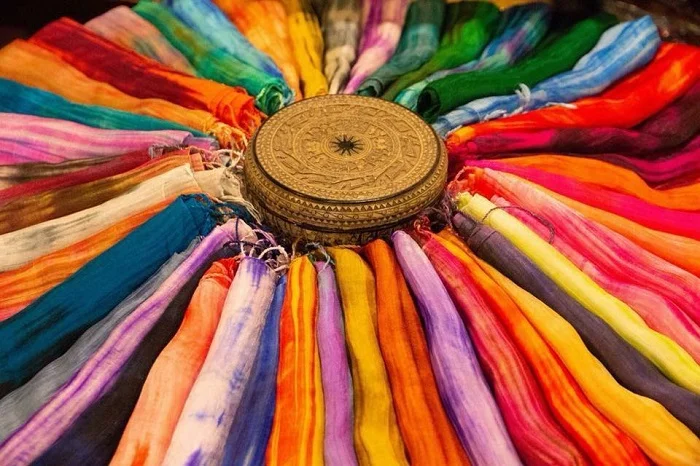
Hue Ao Dai (Dress)
The image of a woman in a graceful, traditional Ao Dai is very familiar to the people of the ancient capital. If you visit, you can choose some Ao Dai to take photos in or to buy as gifts. Hue Ao Dai often comes in colors like purple, brown, and green, with simple yet elegant and impressive designs.

Sesame Candy
When it comes to Hue’s specialty foods, sesame candy is a must-mention. This sweet and fragrant snack is especially loved by children. Sesame candy is carefully packaged and inexpensive, making it a great souvenir choice after your trip.

Dried Ep Cake
Dried Ep Cake is made from meat, tapioca flour, green onions, and eggs—one of the special and appealing dishes in Hue. When eaten, you can clearly taste the crispiness of the cake, the rich flavor of the pate, and the spiciness of the sauce. Try dried Ep Cake as a Hue souvenir for your friends and family.
Hue Areca Candy
Previously, areca candy was a popular snack among children in Hue. Over time, it has become a specialty gift favored by many tourists. When you suck on the candy, it gradually melts with a sweet, mild flavor. It’s called areca candy because its shape resembles pieces of areca.
Hue Eucalyptus Oil
Hue eucalyptus oil has many special uses, such as preventing colds, relieving nasal congestion, and protecting against wind. Therefore, it is also considered a meaningful Hue souvenir for loved ones. The oil is inexpensive and long-lasting, making it a great gift option when traveling to Hue.
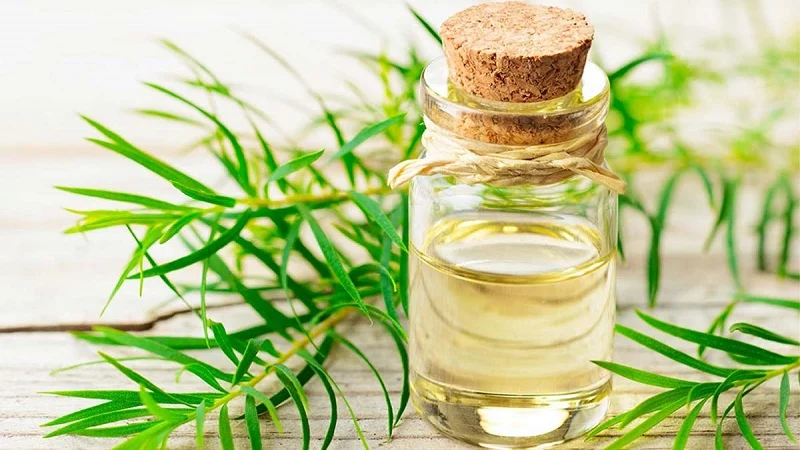
Imperial Face Powder
Imperial face powder is a natural product linked to the beauty needs of Hue women from the Nguyen Dynasty. Along with its long history, it is also a safe and gentle product suitable for all skin types, making it popular among customers.
Green Bean Cake
This type of cake was traditionally used in royal banquets, making it a specialty with significant traditional value in Hue. This cake is widely available in Hue at a reasonable price.
Thanh Tra (Pomelo)
Thanh Tra is one of the most refined specialties of the people in the ancient capital. In the past, Thanh Tra was offered to the king. When ripe, it has a mild fragrance and sweet flavor. This fruit can be stored for a long time and is used in many delicious dishes like dried shrimp salad and dried squid.
Nem and Tre
Hue’s Tre is a tasty dish made from shredded pork belly mixed with ingredients like galangal, roasted rice powder, garlic, and guava leaves. Additionally, Hue’s sour fermented pork is also prepared in a very distinctive way. Hue people often enjoy spicy food, so these dishes have a bit of spiciness. If you’re a food enthusiast, these two items make great Hue souvenirs.
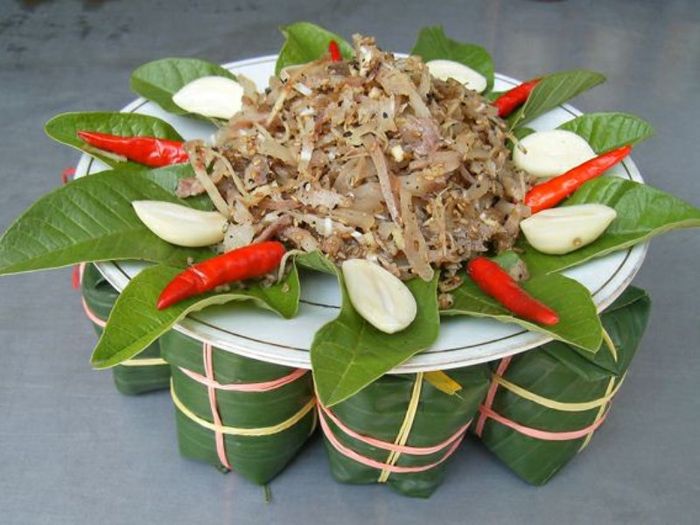
Hue Pork Roll
Hue Pork Roll is small, wrapped in banana leaves with ingredients like pepper and other spices. This type of pork roll is usually eaten with Hue beef noodle soup to enhance the flavor.
Famous Hue Fish Sauces
Hue is also known for its diverse culinary culture. Here, you can easily buy various delicious fish sauces like shrimp paste, papaya fish sauce, sour shrimp paste, shellfish fish sauce, and oyster sauce. Choosing fish sauce as a gift is also an interesting option, helping your friends and family learn more about the cuisine of the ancient capital.
Places to Buy Hue Souvenirs for Tourists
Dong Ba Market
- Address: 2 Tran Hung Dao Street, Phu Hoa Ward, Hue City
- Opening Hours: 6:00 AM – 10:00 PM
Dong Ba Market, located in the heart of the city, is one of the most bustling shopping spots in Hue. Here, you can freely choose products that reflect the essence of the ancient capital, such as handicrafts, Ao Dai fabric, dried seafood, and fish sauce. Additionally, the market has many high-quality handmade items available.
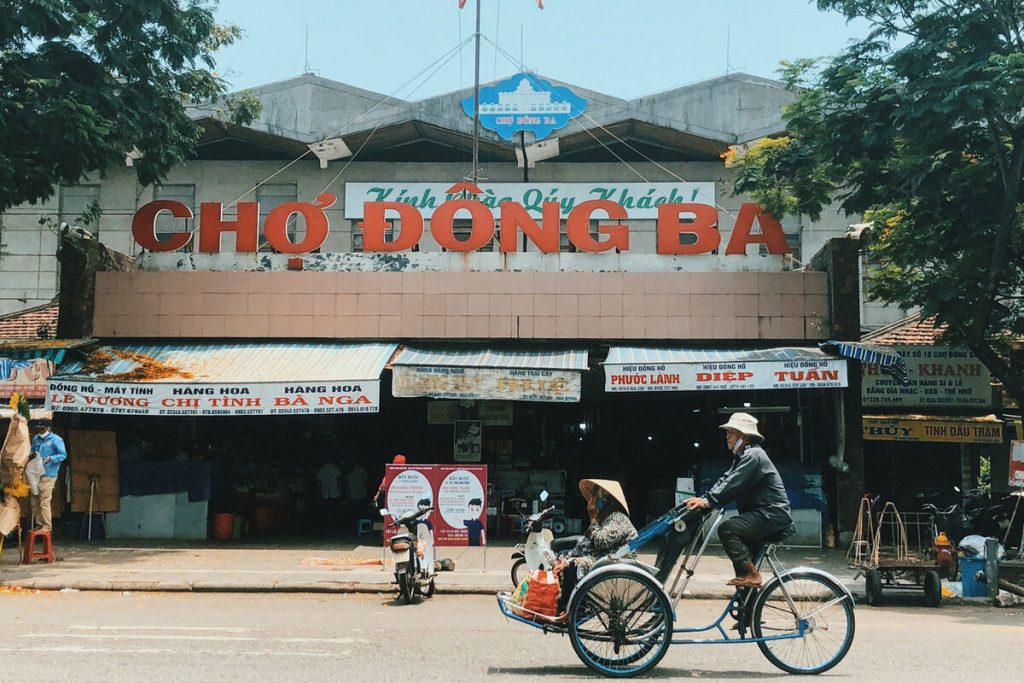
To make shopping and sightseeing in Hue more convenient, you should look for a reliable transportation service. With the private car service with a driver in Hue from DanangPrivateCar.com, you’ll enjoy a private trip with pick-up and drop-off service. English-speaking drivers will ensure your journey is safe and comfortable, allowing you to choose souvenirs for your family and friends.
Tay Loc Market
- Address: 209 Nguyen Trai Street, Tay Loc Ward, Hue City
- Opening Hours: 5:00 AM – 6:00 PM
Tay Loc Market not only has many Hue souvenir shops but is also known for its delicious food. You can visit this market to both shop and enjoy various local specialties.
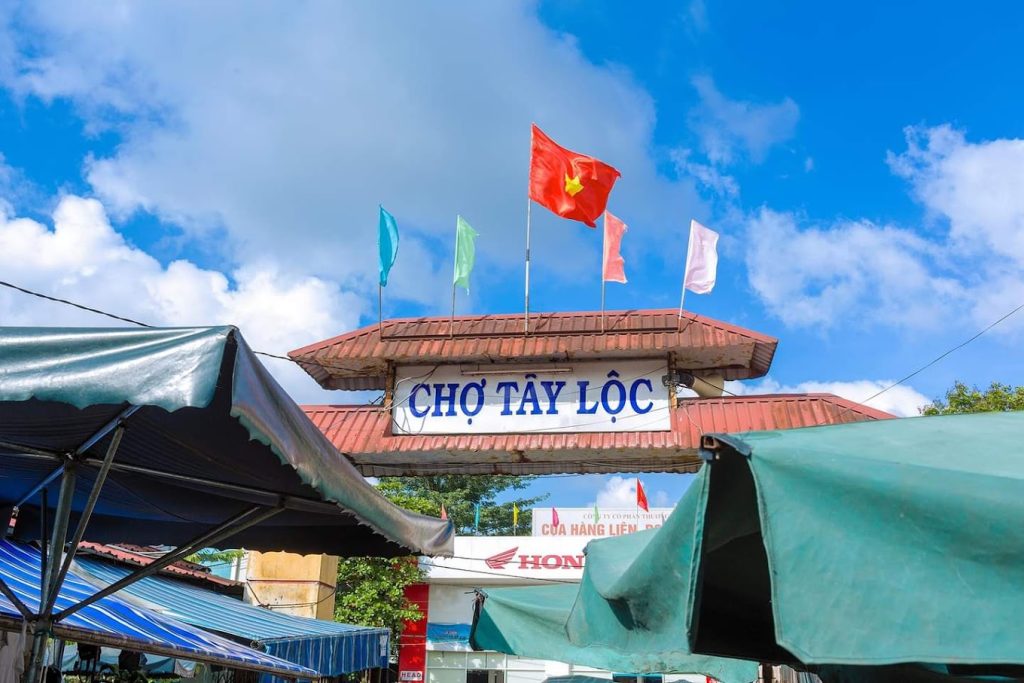
An Cuu Market
- Address: Hung Vuong Street, Phu Nhuan Ward, Hue City
- Opening Hours: 8:00 AM – 6:00 PM
An Cuu Market is the largest market in Hue City, named after a famous river from the Nguyen Dynasty. It offers a wide range of distinctive Hue souvenirs and also allows you to taste many local delicacies like Nam Pho cake, turmeric noodle soup, and grilled pork noodles.
Gia Huy Silk Tailor Shop
- Address: 48 Pham Ngu Lao Street, Hue City Center
- Opening Hours: 8:00 AM – 10:30 PM
Gia Huy Silk Tailor Shop offers a variety of exquisite clothing products. The shop specializes in elegant, refined designs using soft fabrics. Many tourists choose products from Gia Huy Silk Tailor Shop as Hue souvenirs after their trip.
Dong Khuyet Dai – The Mosaic of Hue
- Address: Doan Thi Diem Street, Hien Nhon Gate, Imperial City Hue, Hue City
- Opening Hours: 7:00 AM – 10:00 PM
Dong Khuyet Dai – The Mosaic of Hue sells many souvenir items such as bags, clothing, and artisanal products. It is a popular spot for many tourists, especially international visitors.
Tips for Buying Hue Souvenirs
To get beautiful, high-quality Hue souvenirs at the most reasonable prices, keep the following tips in mind:
- Choose items that can be kept for a long time and displayed.
- Prioritize lightweight, compact products that are easy to carry to avoid exceeding your luggage weight limit.
- Avoid buying from street vendors to prevent being overcharged.
Hue souvenirs not only convey your feelings but also preserve many unforgettable travel memories of the ancient capital. Therefore, tourists should carefully consider their choices, check prices, and find reliable places to buy the best items. We hope the information about the products and where to buy them above will be helpful for your upcoming trip to Hue!

